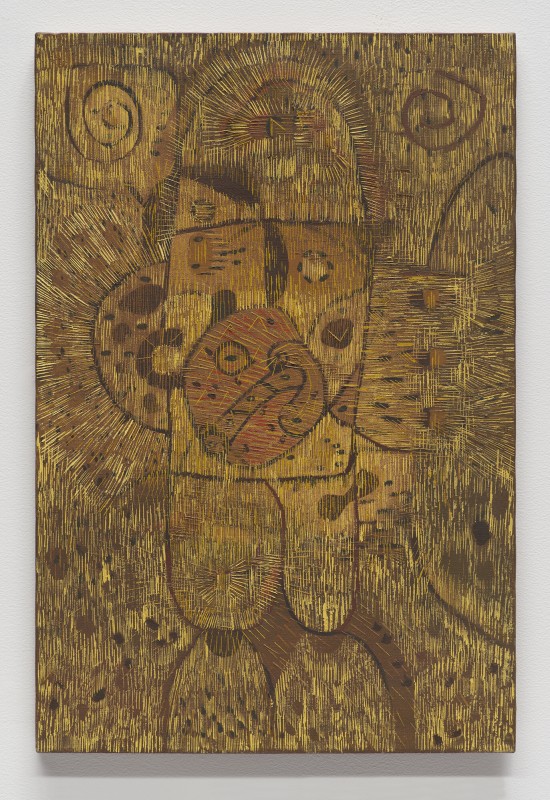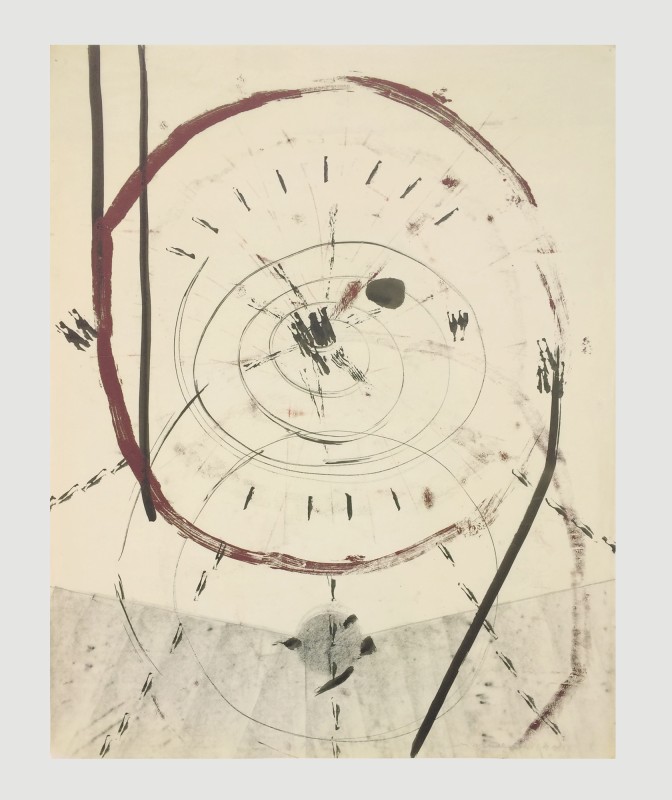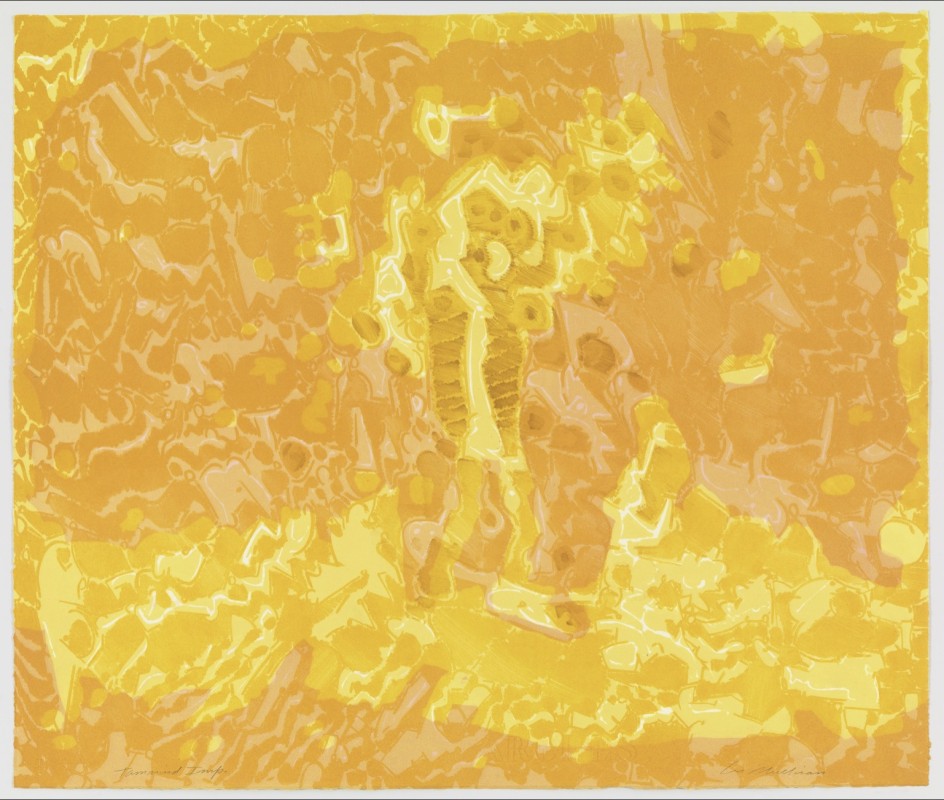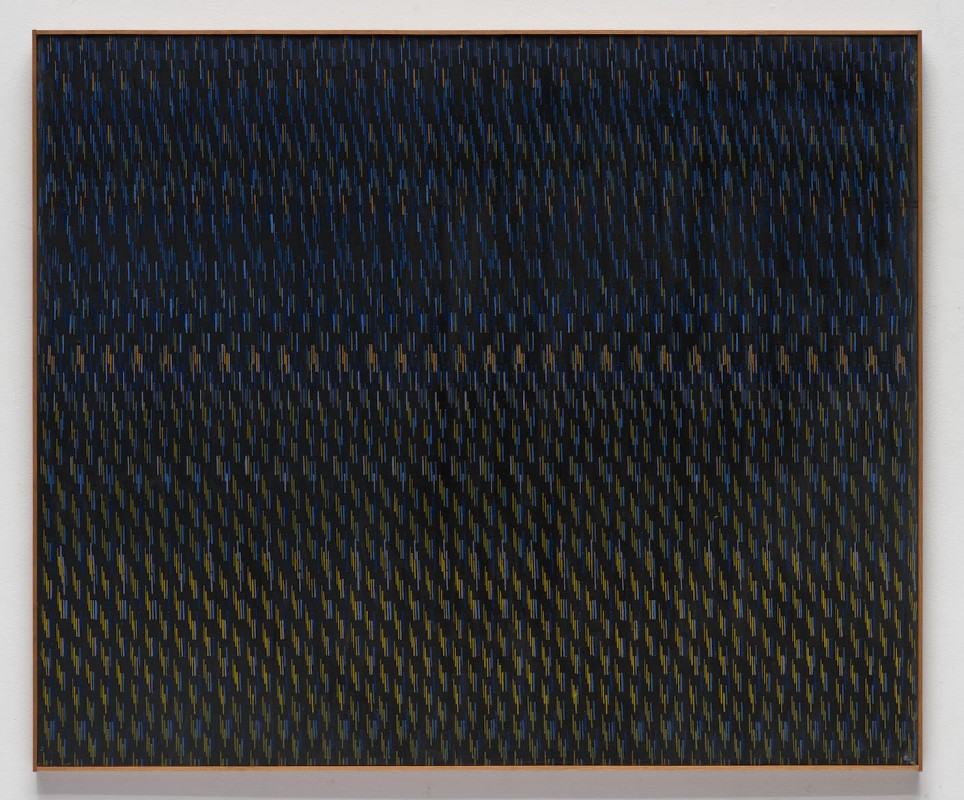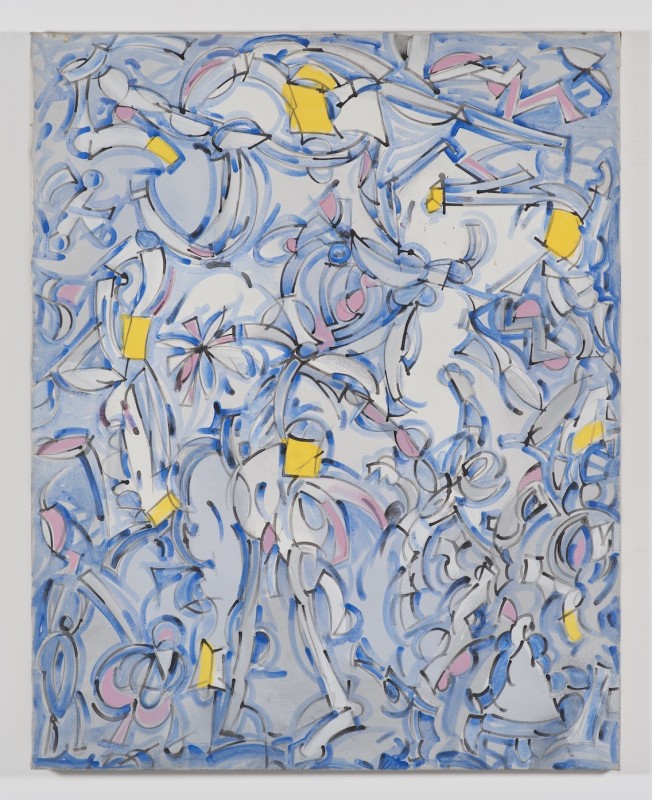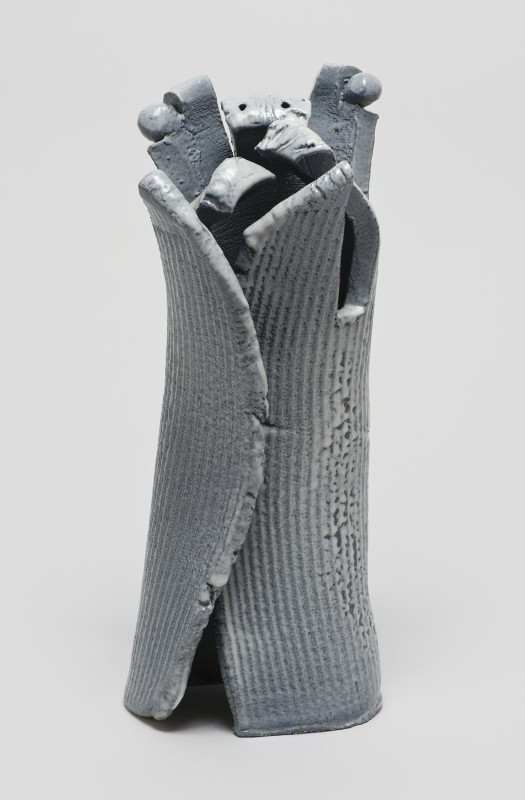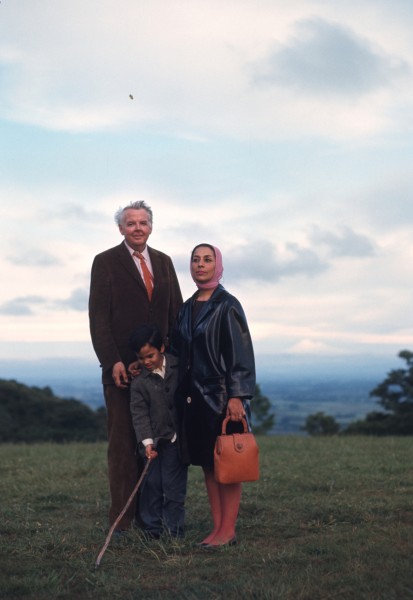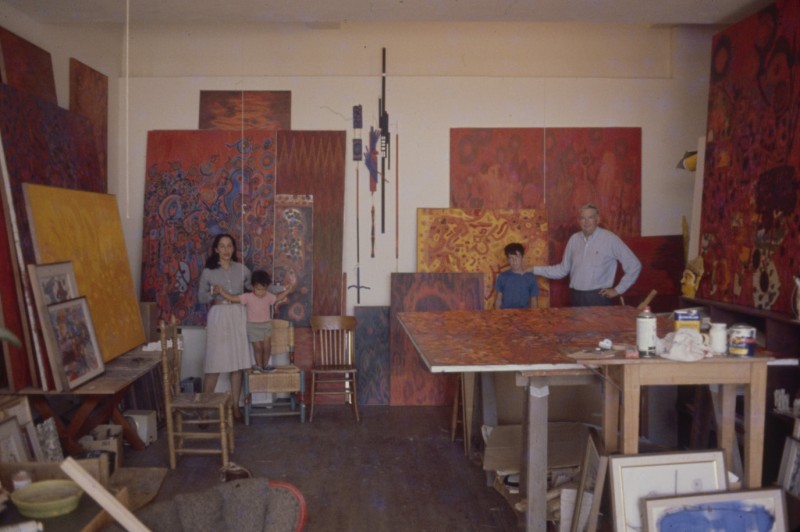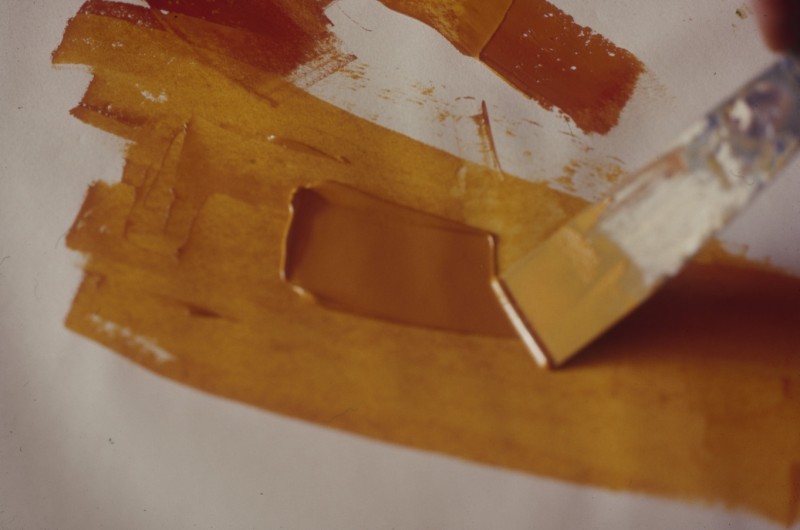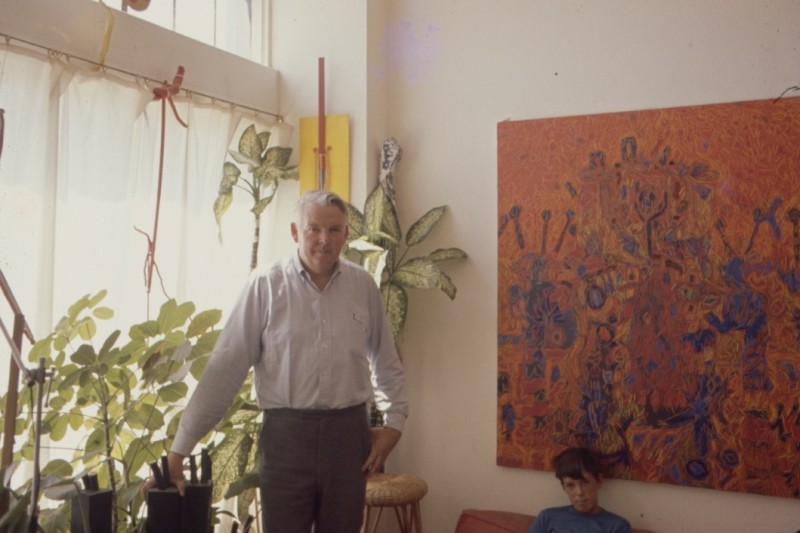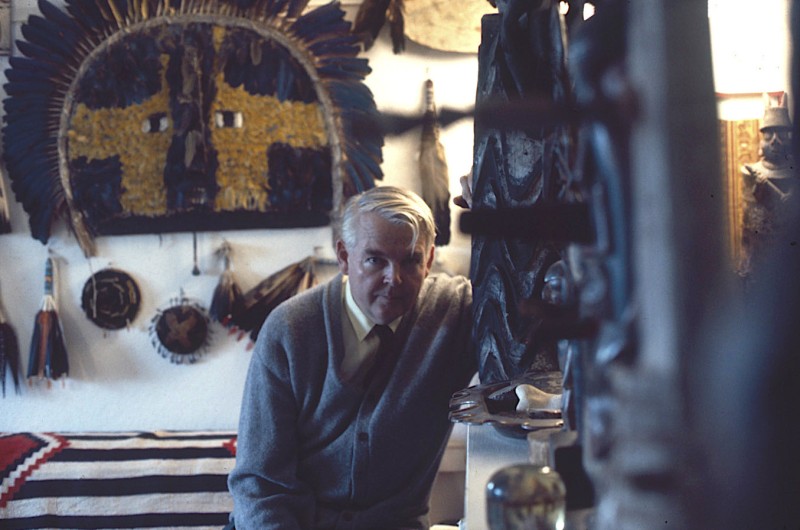Lee Mullican (b. 1919, Chickasha, Oklahoma, d.1998, Santa Monica, California) was an American artist, curator, professor, and writer who cultivated a uniquely West Coast approach to abstract painting that explored the mystic and transcendent. A constant seeker, Mullican’s dynamic experimentation defined his productive sixty-year career. With an enduring belief in the spiritual dimension of abstraction, his works are rooted in his fascination with patterns found in nature alongside a lifetime’s study of non-Western histories of art. In Mullican’s richly textured world of earthly topographies and cosmic realms, the bird’s eye merges with the mind’s eye, as outer space and inner space conflate in the rhythmic abstraction, woven patterns, and symbolic figuration built up over his picture planes.
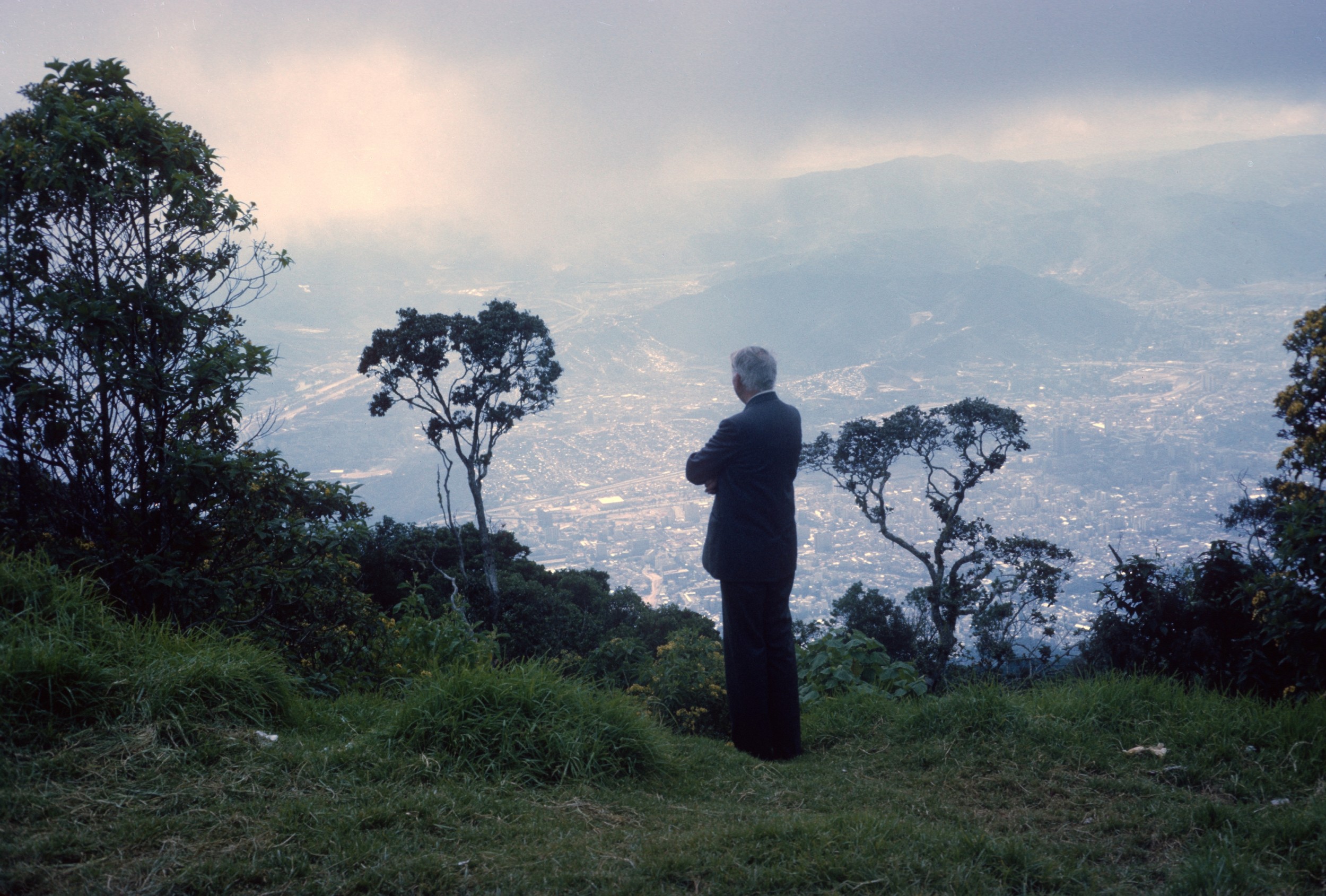
1919
Lee Mullican is born in Chickasha Oklahoma as the third child to his mother, Zula Jolley, and father, Harris Mullican. Mullican had an older brother, older sister who passed away as an infant, and a younger brother.
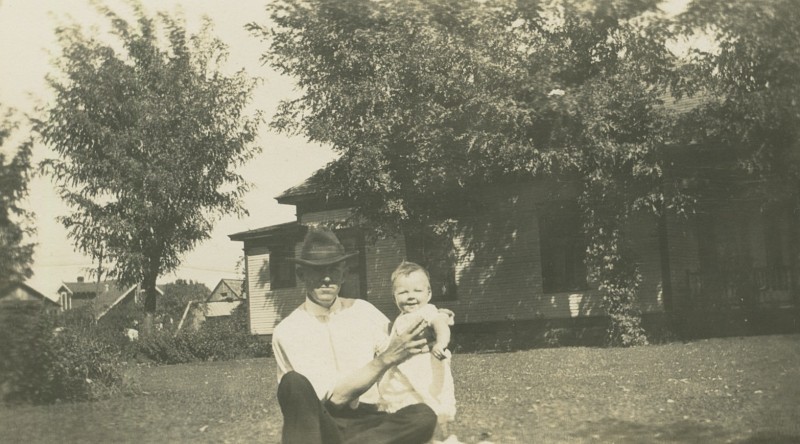
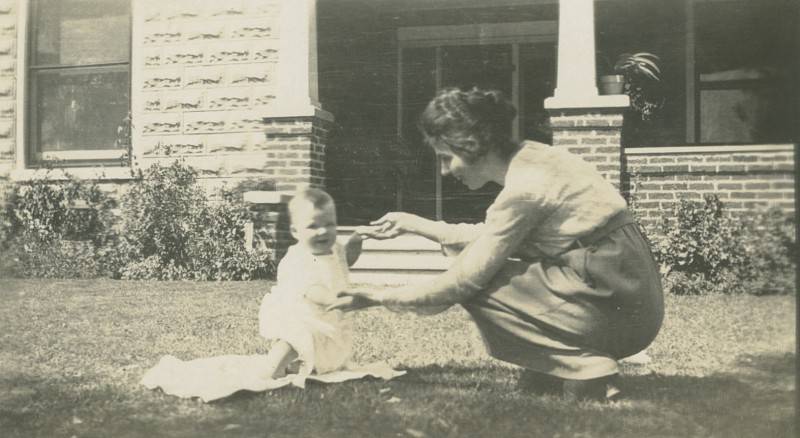
1927
As a child Mullican walked to school four blocks away. His first encounter with art was in second grade through his art teacher, Miss Blue.

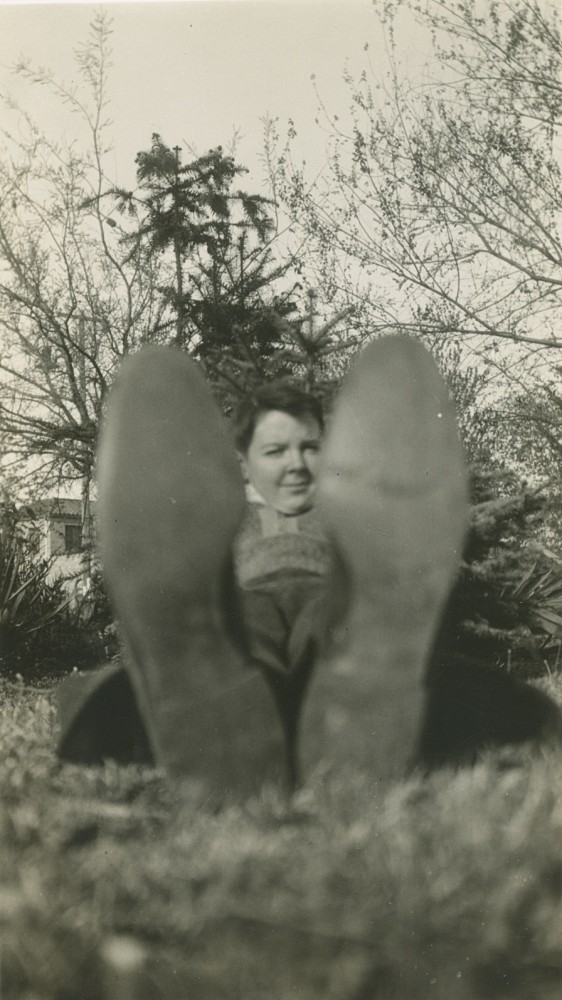
1930
Mullican’s father was a school teacher turned banker and his mother attended college where she took art classes and continued painting. Mullican first began painting when his parents were away on vacation and he picked up his mother’s oil paints.
1933
His interest expanded when his mother brought home a Chicago Art Institute catalog of paintings at the Chicago World’s Fair where he was first exposed to modern art, which fascinated and intrigued him.
In high school, Mullican performed in theater for the first time that ignited a passion for live performance art.
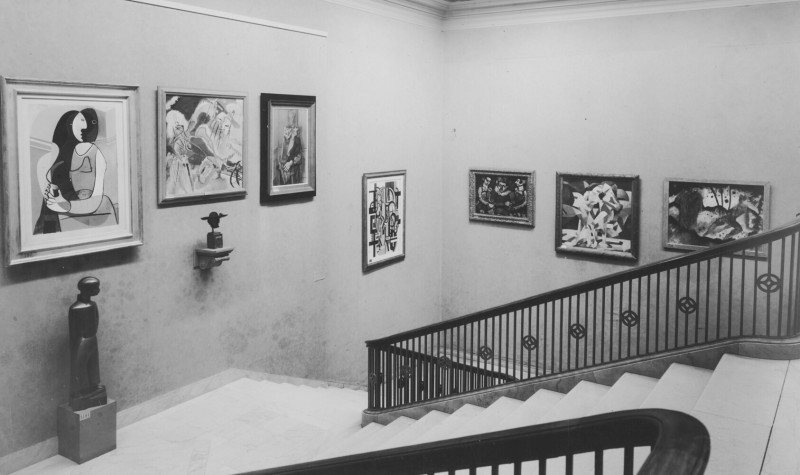
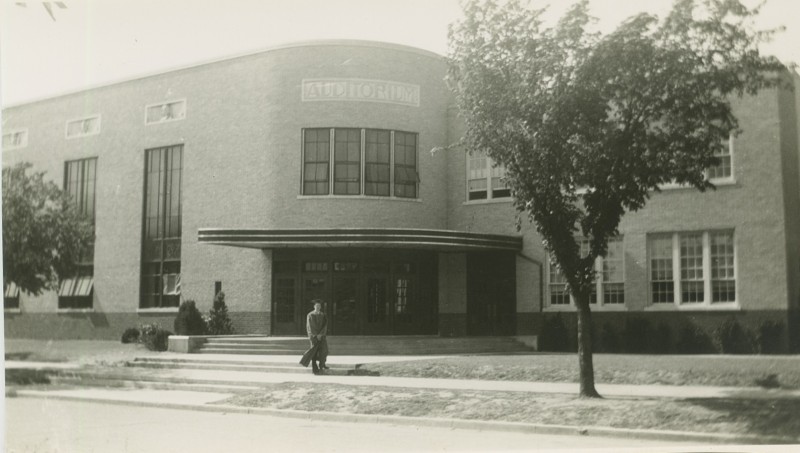
1938
Mullican attended his first formal art class while attending Abilene Christian College in Abilene, Texas where his professor, Mary Locke, encouraged him to become an artist and another professor, Juanita Tittle, influenced him to look at modern abstraction. He discovers and is inspired by the writing of Gertrude Stein.
1939
Mullican transfers to the University of Oklahoma where he took classes in painting, sculpture, ceramics, and art history where he saw slides of the modernist painters working in Europe at that time.
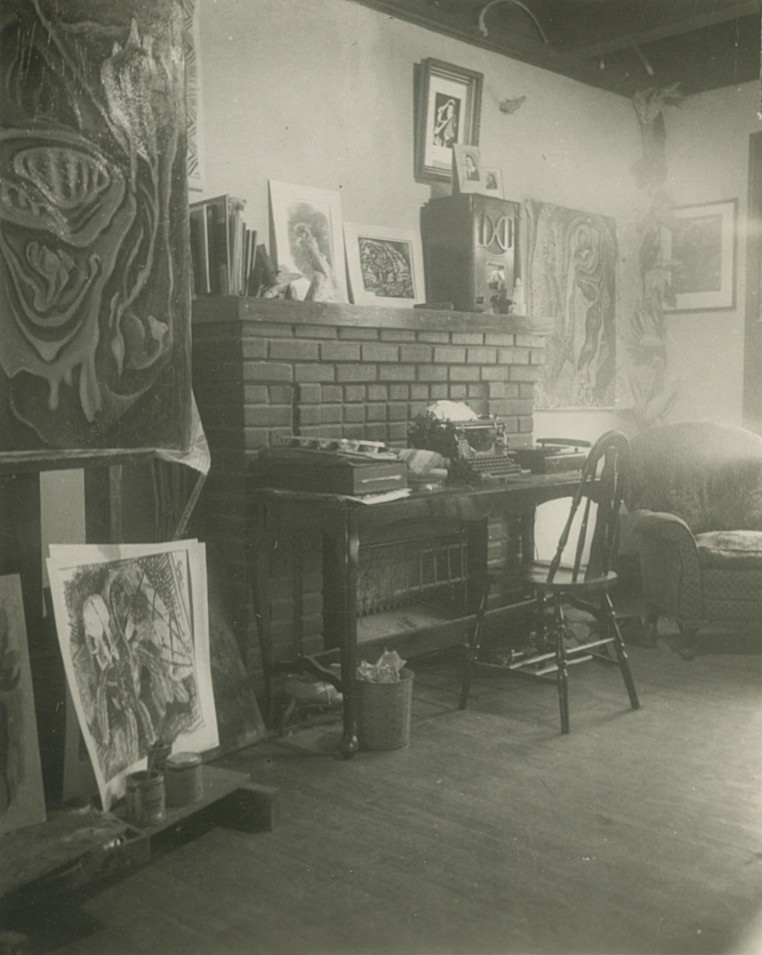
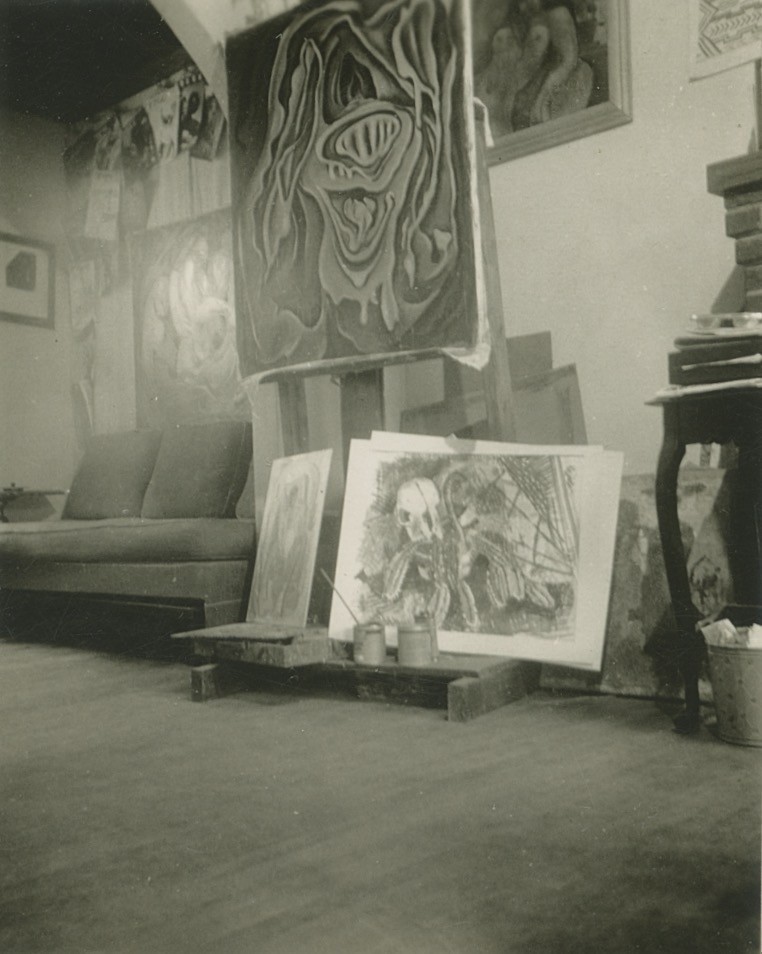
1940
Knowing he would have to register for the draft at twenty-one, Mullican applied to the Kansas City Art Institute to study.
1941
While at the Kansas City Art Institute Mullican took classes under painter Fletcher Martin.
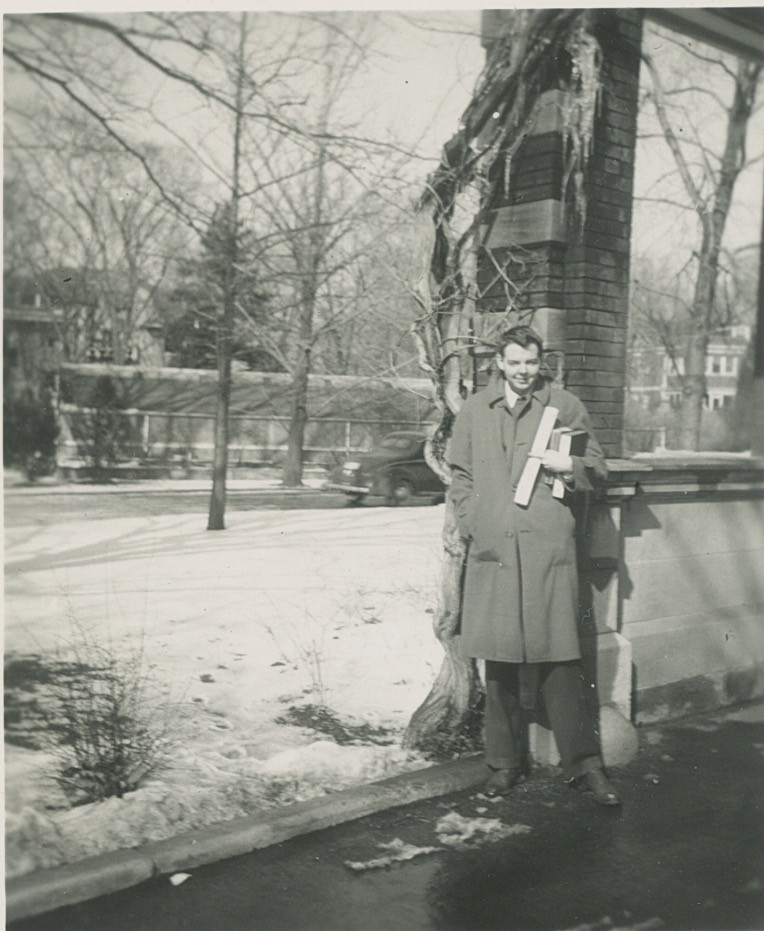
1942
Mullican graduated from the Kansas City Art Institute went to war in June. He was assigned to basic training to learn topography in Fort Leonardwood, Missouri. After his training Mullican was stationed in Fort Belvoir, just outside Washington, D.C..
While stationed on the east coast Mullican visited museums, as well as theaters to see plays, operas, and dance in Washington D.C., Baltimore, and New York on weekends. On one trip to the Phillips Gallery in Washington, D.C. Mullican encountered the work of Paul Klee who would became a consistent influence throughout Mullican’s career.
“There’s something about the scale of them that really attracted me. And plus just the sense of what he could do by making a mark, and then making another mark, and the use of color and abstraction. There was just no one else doing this sort of thing. So that was a great influence.”
Mullican discovered another influence at the Museum of Modern Art where he saw the work of Morris Graves, who later became a friend. From Fort Belvoir Mullican was sent to Camp Maxey near Paris, Texas where he was assigned to the topographic battalion. During this time Mullican meets Jack Stauffacher, a fellow artist who printed maps during the war. While Mullican felt a moral and civic duty to serve in the war it was not an easy three and a half years for him and he relied on art and poetry to make it bearable.
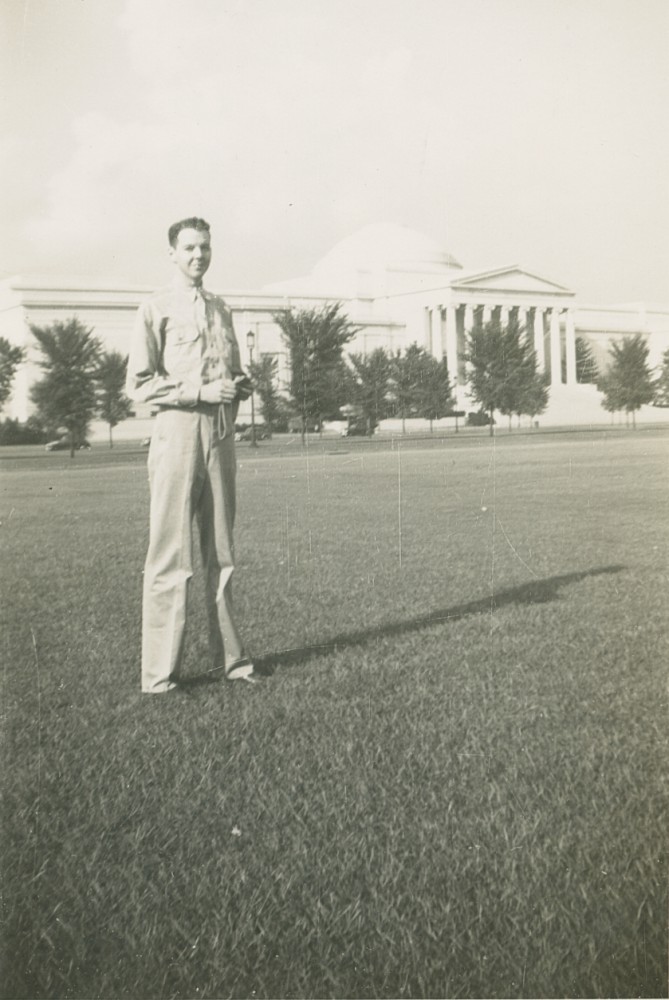
1943
Mullican was then transferred to Indio, California for army desert training. During this time he made his first visit to Los Angeles where he spent time in Jazz clubs on Sunset Boulevard. After desert training Mullican was relocated to Oahu, Hawaii for one year where he started producing maps from aerial photographs. This would have a lasting impression on his painting practice.
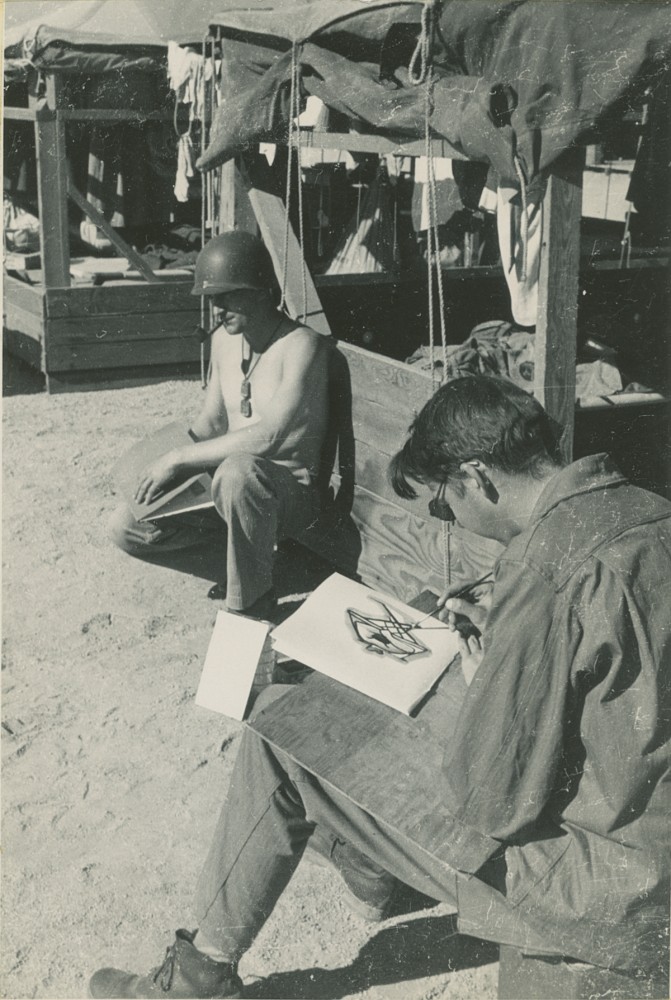
1944
After desert training Mullican was relocated to Schofield Barracks in Oahu, Hawaii for one year where he started producing maps from aerial photographs. This would have a lasting impression on his painting practice.
While in Hawaii Mullican visited the library at the Honolulu Academy of Fine Art often where he discovered DYN magazine published by Austrian artist in Mexico City. Mullican recognised his ideas and artistic pursuits in the pages of the magazine which deviated from surrealism, inspired by primitive art, folk art, pre-Columbian art, and Northwest Coast art.
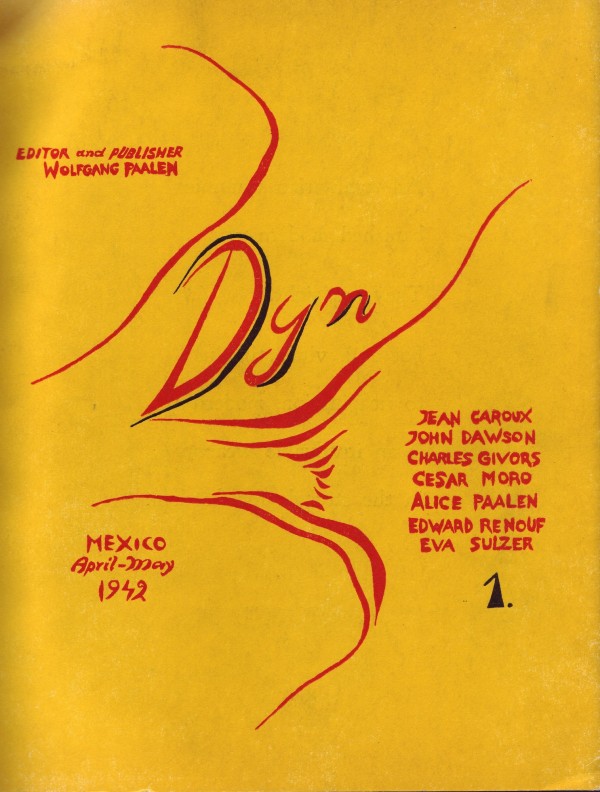
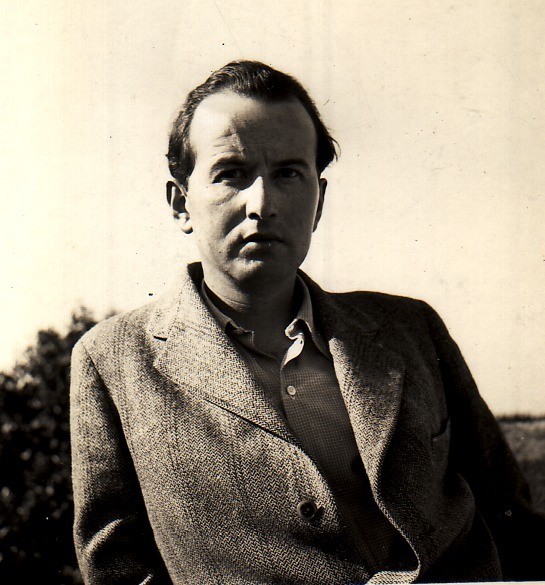
1945
To endure war times Mullican dreamed of his life as an artist after the war. After Hawaii, Mullican was sent to Guam to make maps. In the weeks following the Hiroshima bombing, Mullican was relocated to Tokyo for one month saying, “during that time I had a sense of what war was really like […] I realized how wrong all of that had been.”
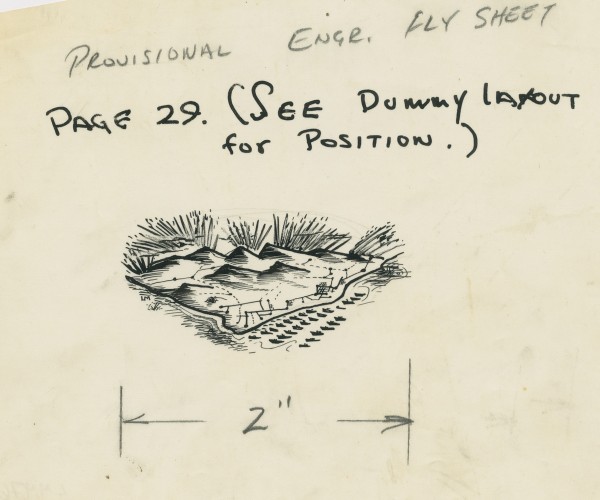
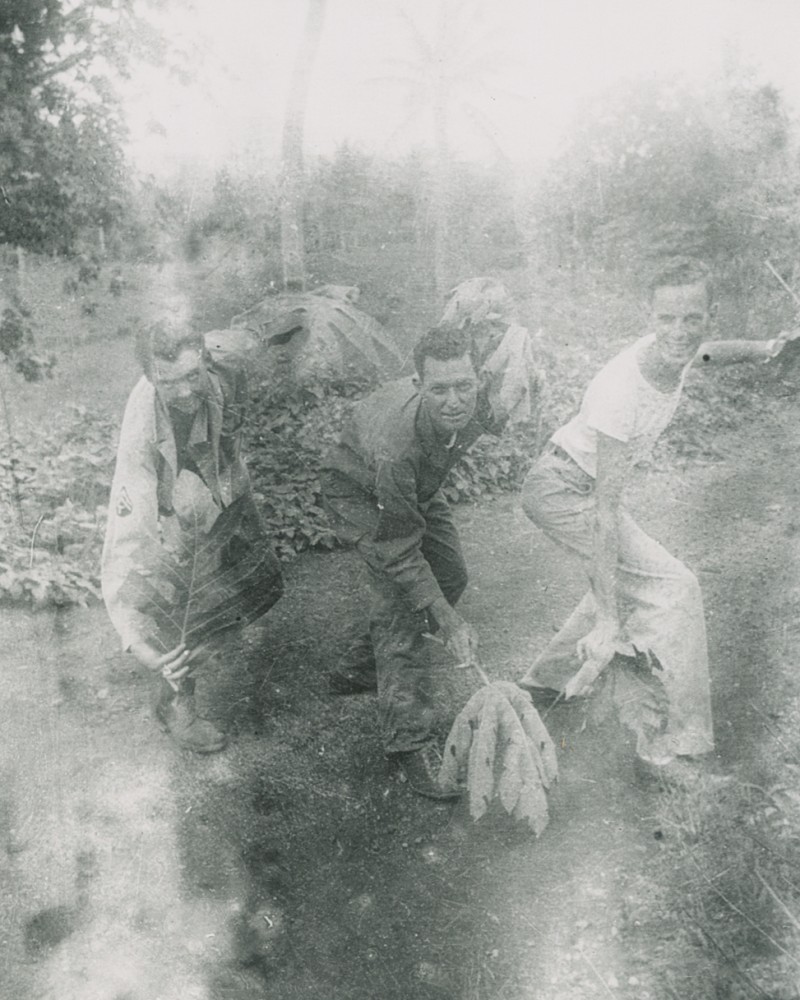
1946
Upon returning to the United States Mullican sets up a small art studio in an empty office in a bank building in Chickasha, Oklahoma for one year to be near his family.
Mullican joins friend in Burlingame, California where Stauffacher had set up a print shop. Mullican lived with Stauffacher and his brother, , and set up a painting studio in the house.
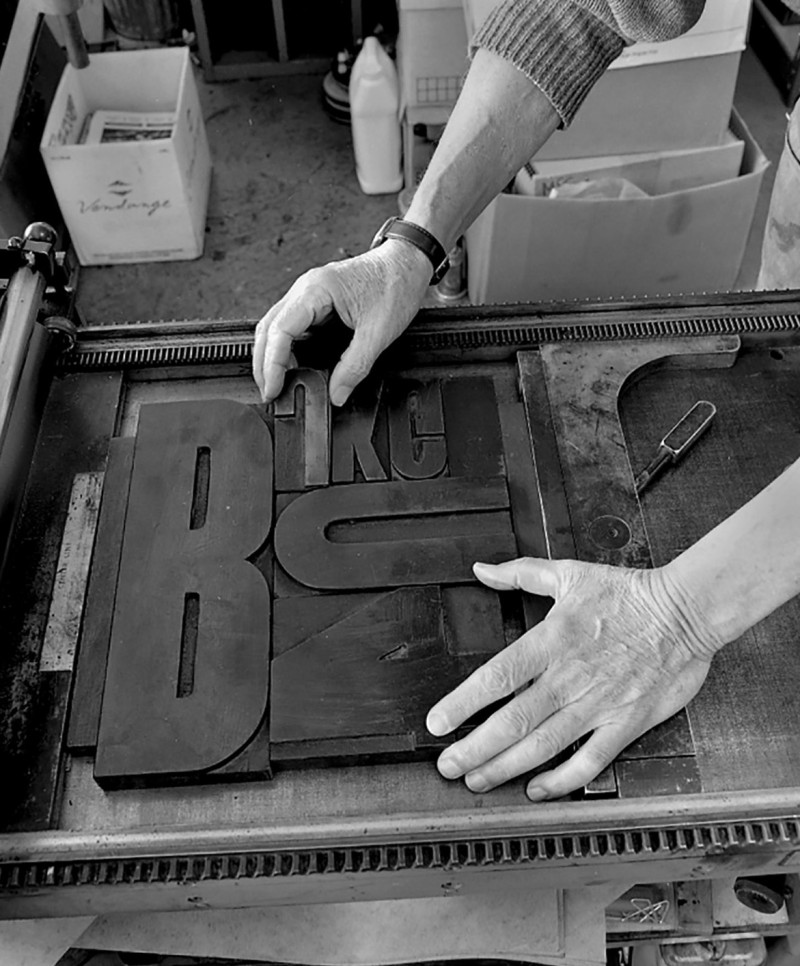
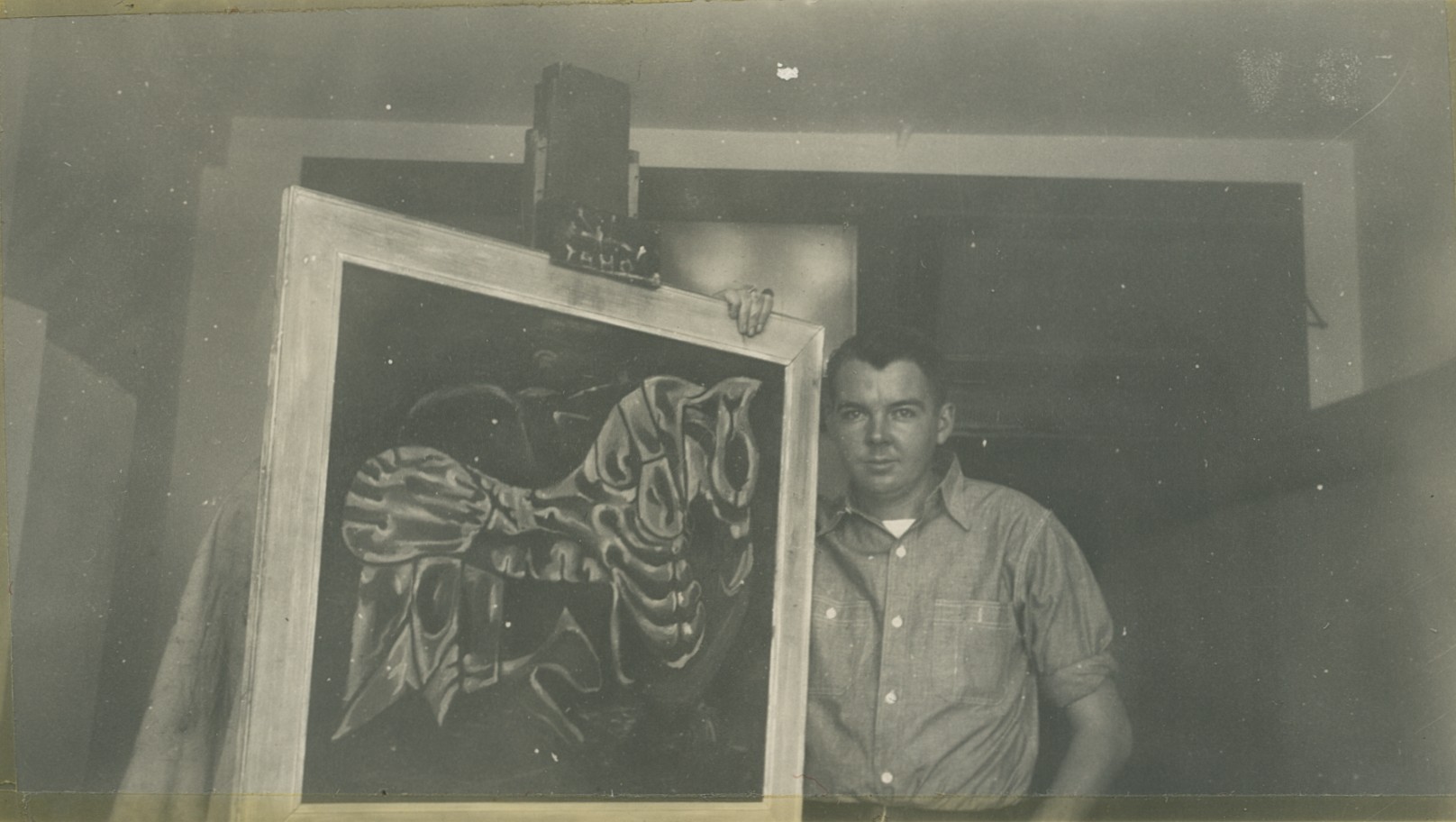
1947
“One day I told Jack that it would be nice if I had a palette knife, see, to work on my paint with, and he said, “Well, here.” He went into the print shop and brought back a little printer’s ink knife, a knife that he used to put ink on the rollers with. He’d dip it out of the can and smear it on. And so, I said, “Well, that’ll be just fine.” And that was the beginning of my striation technique.”
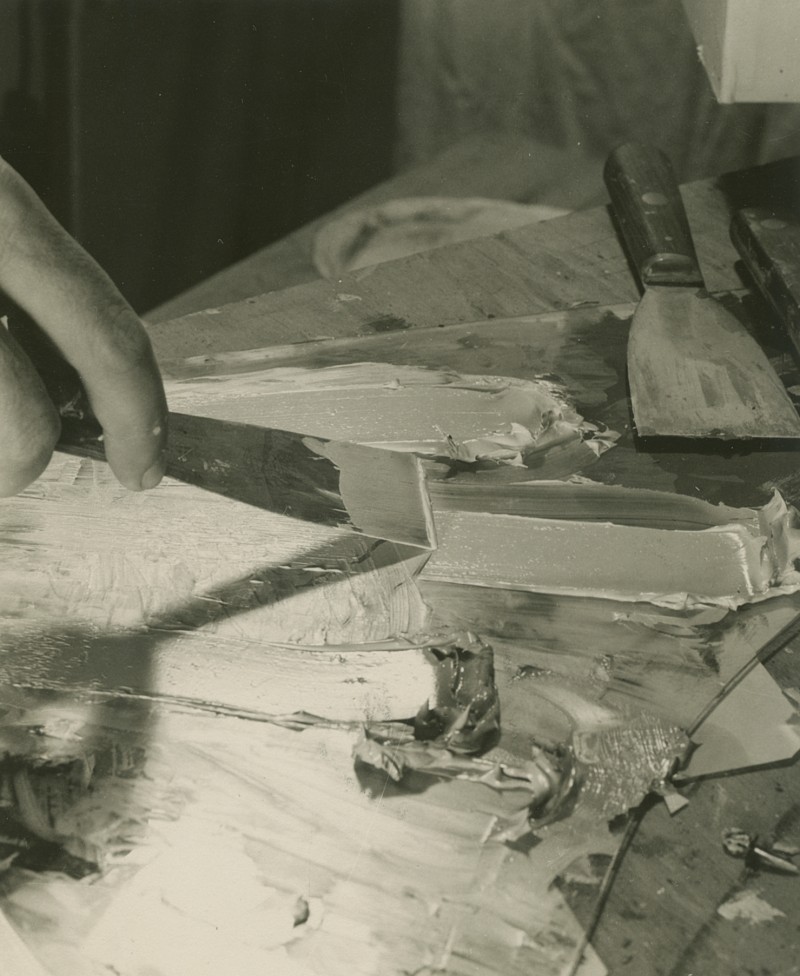
1948
Mullican and the Stauffacher brothers moved out of the Stauffacher’s house and into a small apartment in the neighborhood of Russian Hill. They collaborate on a publication of drawings and poems by Lee called “The Gain of Aft” printed by Stauffacher’s Greenwood Press.
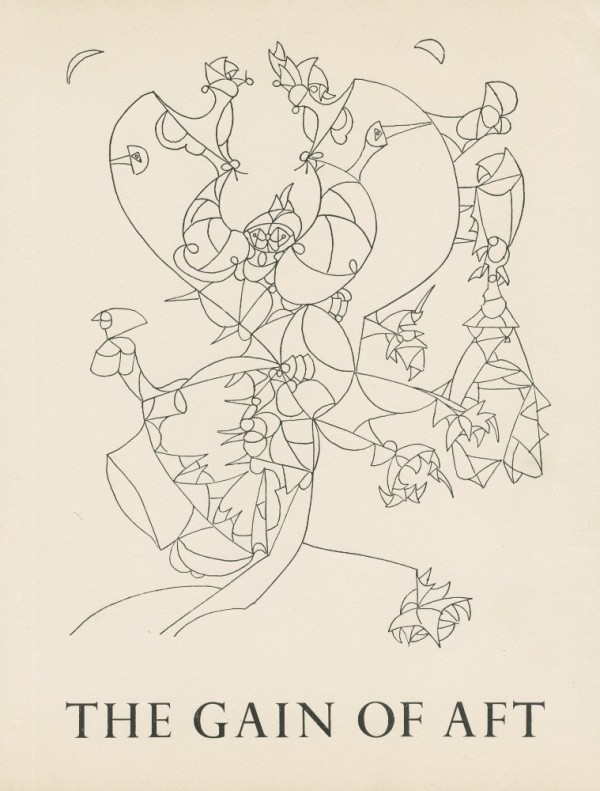
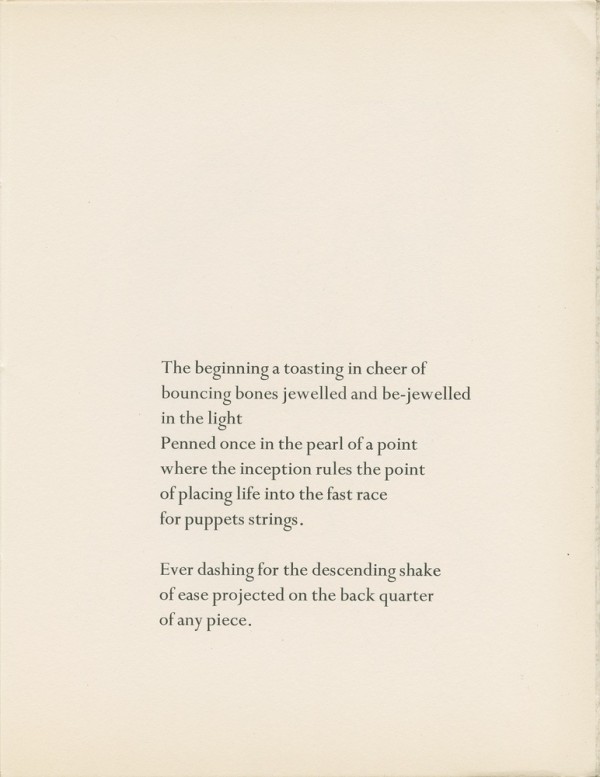
Through Stauffacher, Mullican was introduced to poets, writers, and architects, including , , , , , , and . Mullican illustrated a book by Broughton called Musical Chairs
1949
Jack and Frank Stauffacher both got married and Mullican began living alone.
and his wife, , were in San Francisco for an exhibition at the San Francisco Museum and Jack Stauffacher was printing the catalog. Stauffacher had hung a painting by Mullican in his print shop’s office where artist Gordon Onslow Ford saw the work, was impressed by it, and asked to meet Mullican. Johnson and Onsolw-Ford became mentors to Mullican, sharing with him works they owned by Max Ernst, P. Delveaux, Pablo Picasso, and Paul Klee. They also introduced Mullican to the work of Yves Tanguy and Wolfgang Paalen. Mullican joins Johnson and Onslow-Ford to visit Wolfgang Paalen in Mexico.Mullican has a solo exhibition at the San Francisco Museum of Art, San Francisco, CA. For which Paalen wrote an essay and Stauffacher printed a catalog.
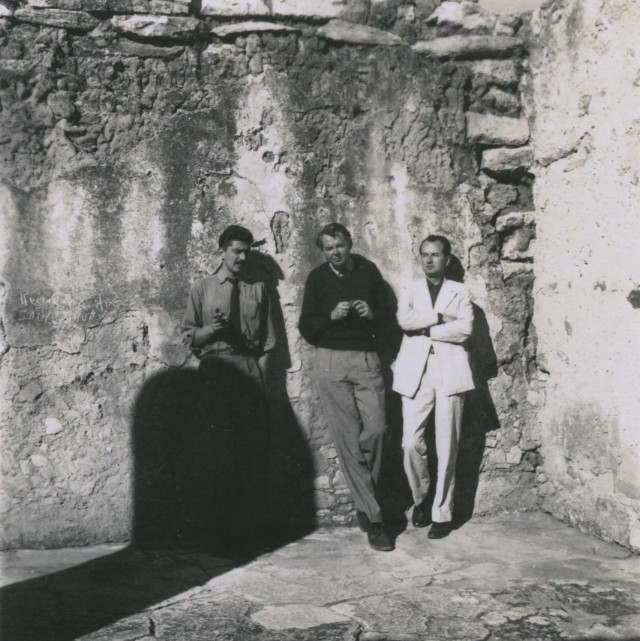
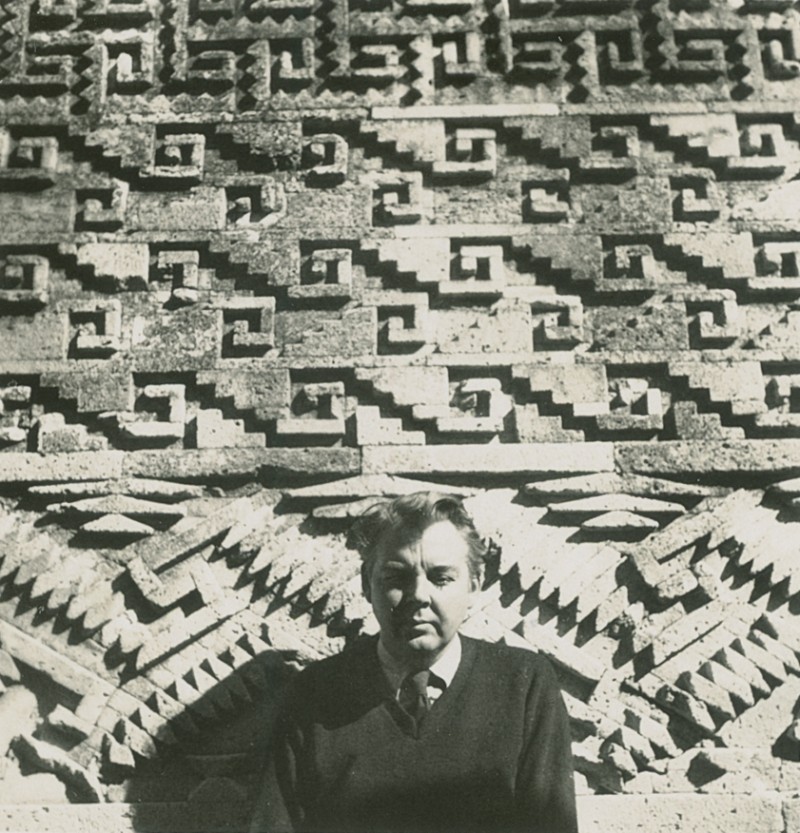
1950
After Paalen visited San Francisco and met Mullican, the two artists along with Onslow-Ford formed the Dynaton group. There, Onslow-Ford, Johnson, Mullican, Paalen, and Paalen’s wife, painter Luchita Hurtado, were living in a Victorian house in Mill Valley, California. Mullican was drawn to the European Surrealism Onslow-Ford and Paalen came out of as well as Paalen’s collection of pre-Columbian Northwest and Mexican artifacts. In the studio, Mullican intuitively mixes these influences and his interests in nature, theater, and jazz to cultivate a singular painting process and aesthetic of rhythmic abstraction.
“One is moved and one is put upon by all kinds of different elements, and sometimes they are very direct and sometimes they are very indirect-and sometimes it takes years to really figure out what it was.”
Mullican took over Jean Varda’s old studio in North Beach. Dealer Marian Willard of Willard Gallery, New York heard of Mullican’s work through Paalen and visited San Francisco to meet with Mullican and offered him an exhibition.
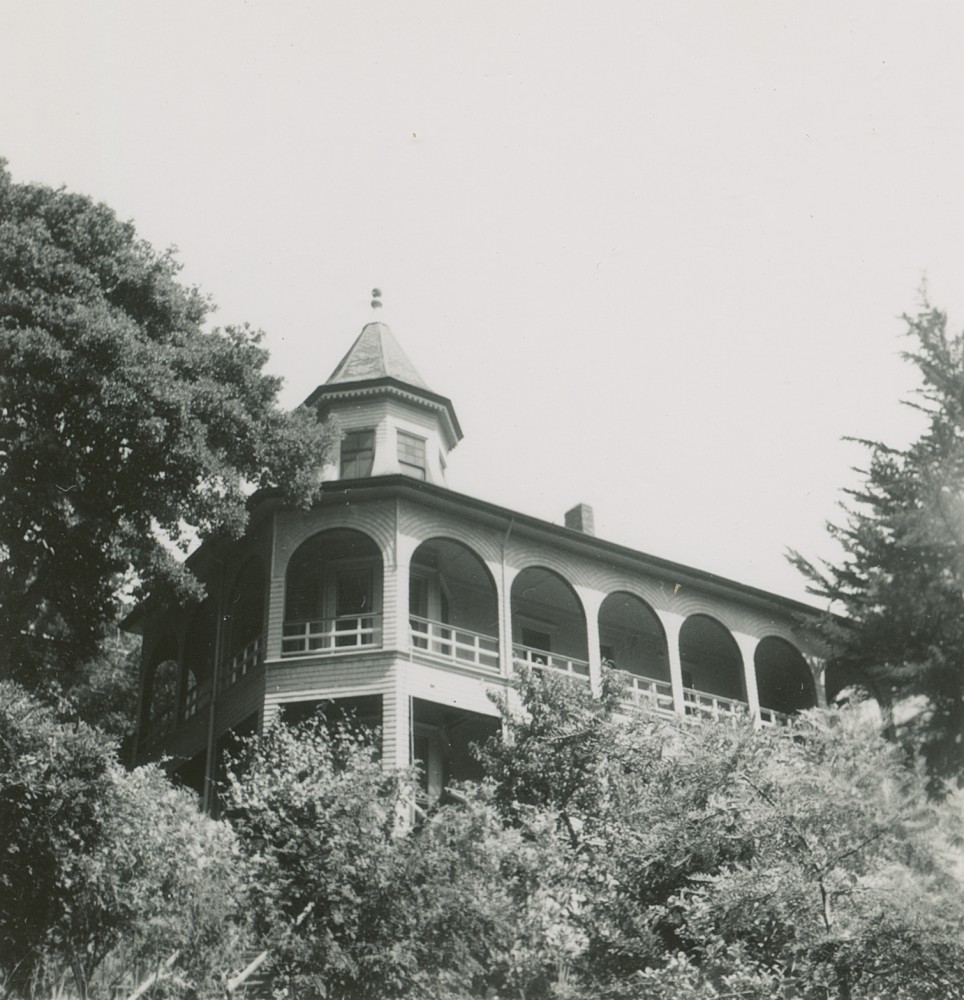
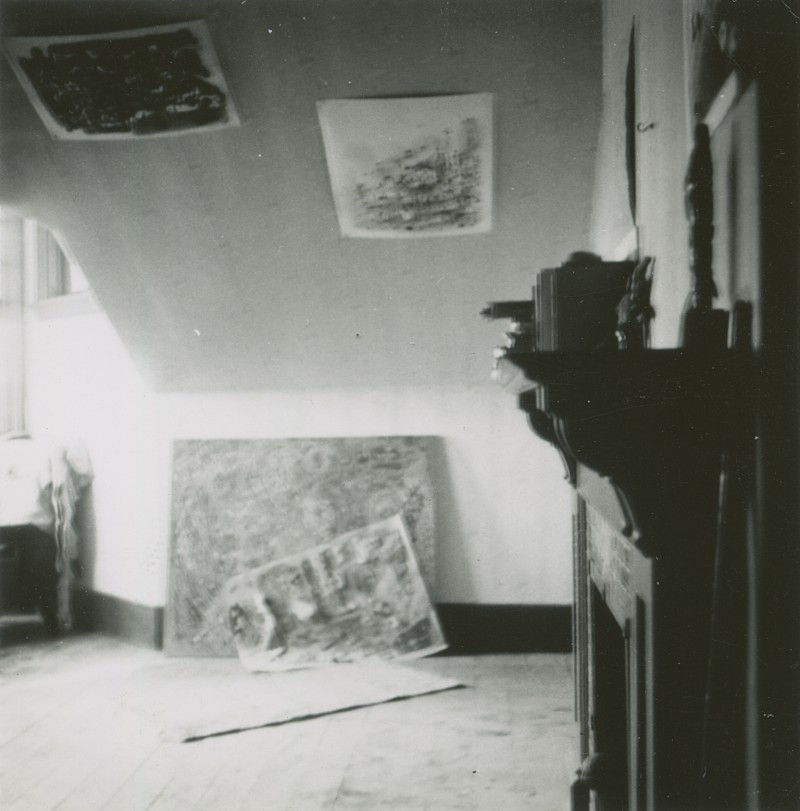
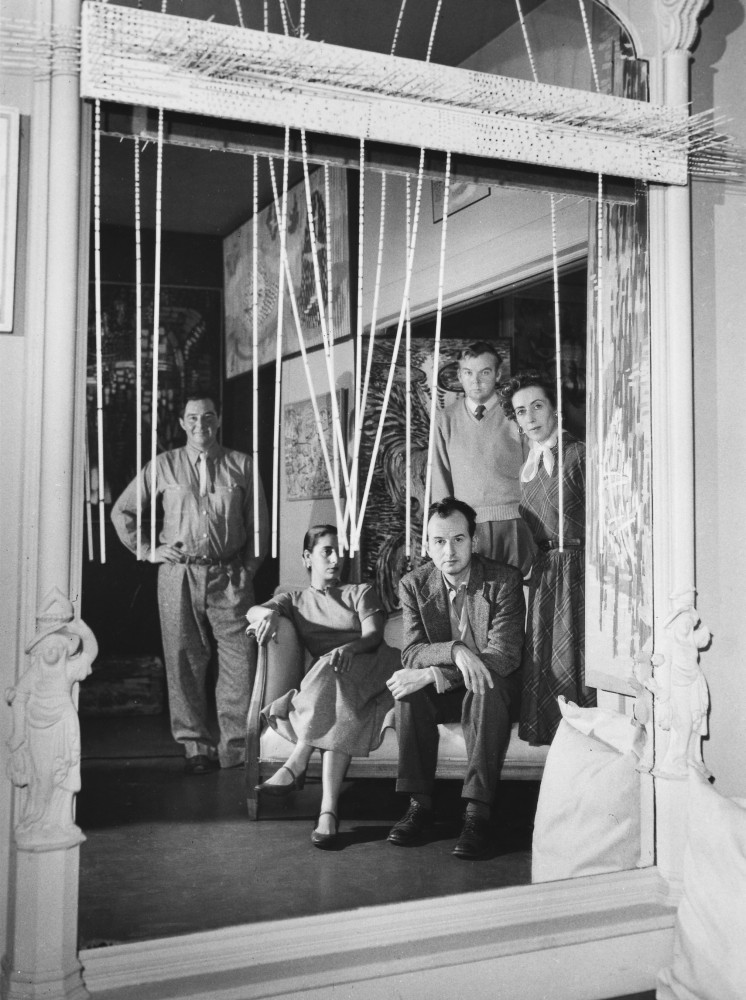
1951
After the three members mounted solo exhibitions at the San Francisco Museum, the exhibitions culminated in the seminal Dynaton exhibition at San Francisco Museum of Art for which Paalen and Johnson wrote texts that outlined the Dynaton’s artistic stakes. Onslow-Ford and Paalen were invested in breaking away from André Breton’s Surrealism, with its emphasis on dreams and illustration.
“Through the Dynaton we were going to find a new subject. We were adding something that really hadn’t been seen before, and went beyond”
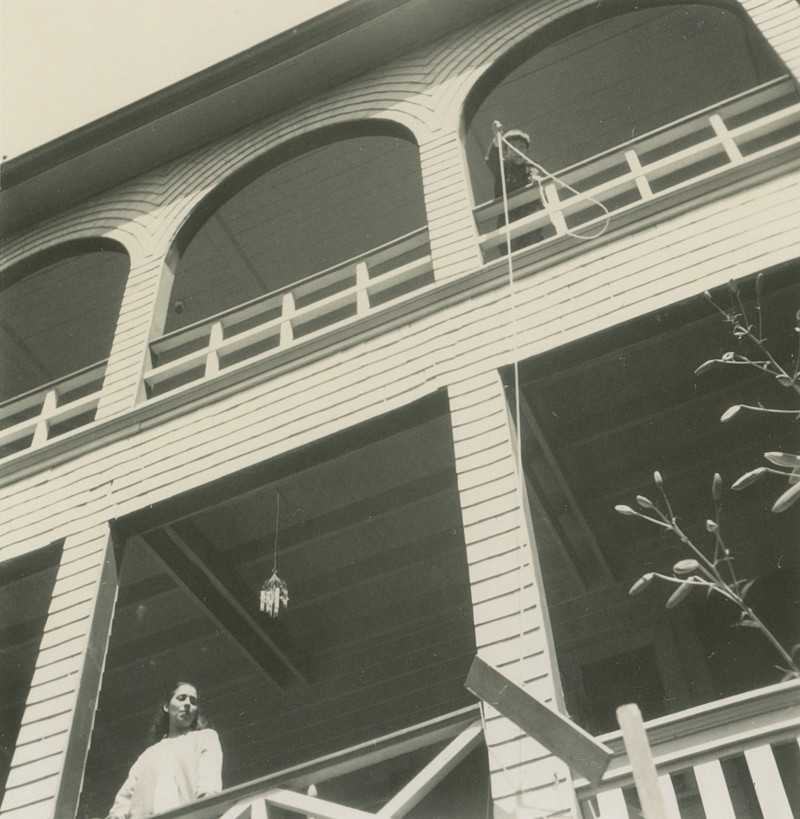
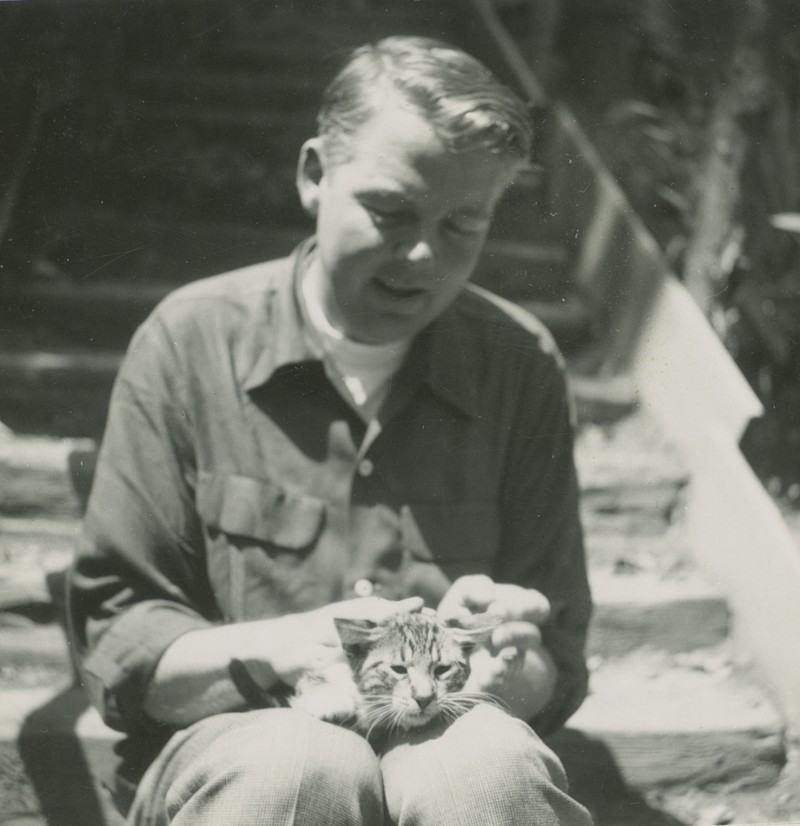
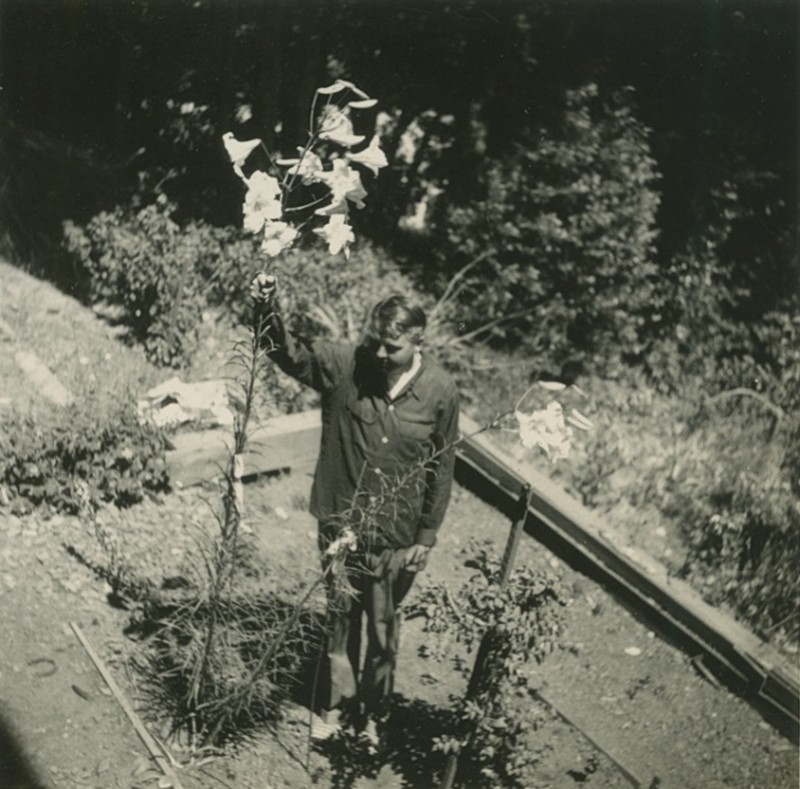
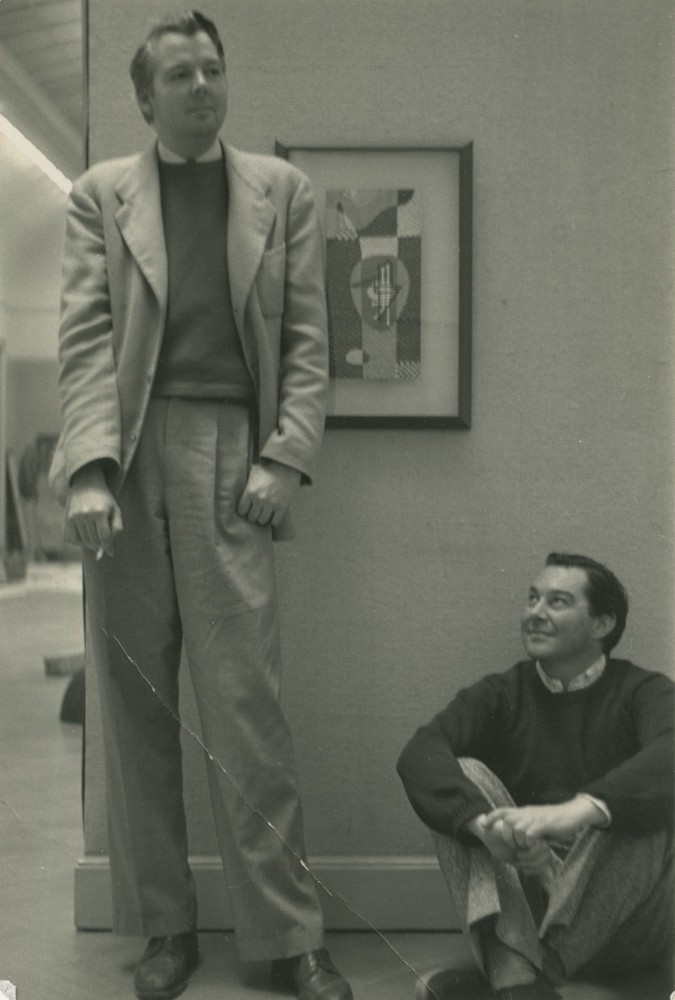
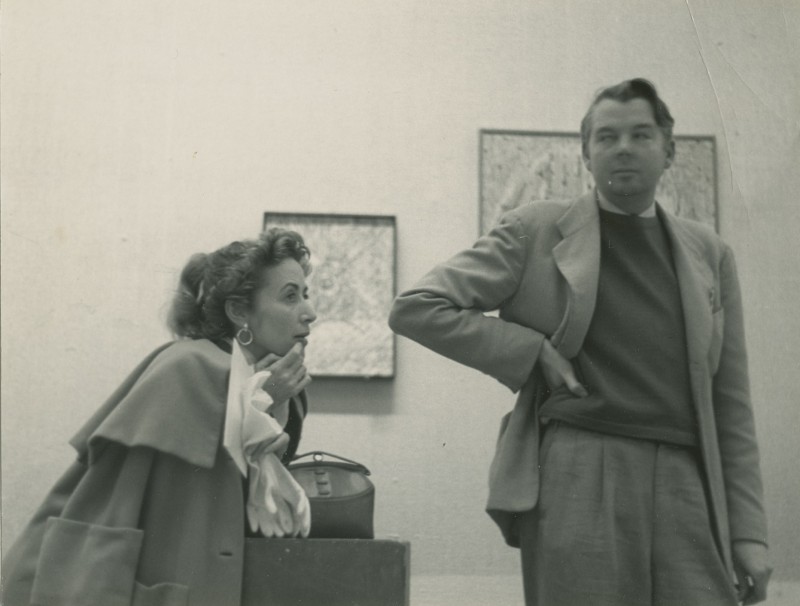
1952
After the exhibition, the Dynaton collective disassembles and exits San Francisco just as the Bay Area Figurative Movement is emerging. Hurtado and Mullican become a couple, Paalen moves back to Paris, and Onslow-Ford and Johnson move to Inverness, California. After Hurtado learns she’s pregnant, Mullican, Hurtado, and Hurtado’s oldest son Daniel Del Solar Jr. go to Santa Fe, New Mexico and Texas before parting ways. Hurtado goes to Los Angeles at the invitation of Giles and Sheila Healey and Mullican goes to Oklahoma with four upcoming exhibitions; at the Philbrook Art Center; the Oklahoma City Art Center; University of Oklahoma, Norman; and the The University of Science and Arts of Oklahoma. Hurtado has their son, Matthew and she finds a home in Santa Monica.
Mullican and Huratdo quickly get to know the cultural scene of Southern California spending time with , , , , , , and , and .
In January Mullican arrives in Santa Monica. Paul Kantor invites Mullican to show at his gallery in Los Angeles. Mullican then has a solo exhibition with Willard Gallery, in New York. Speaking to his painting process at the time, Mullican states: “I am standing on this particular metaphysical, almost unexplainable plane in my studio, and the canvas is there before me. And it’s in this attitude that makes the painting appear.”
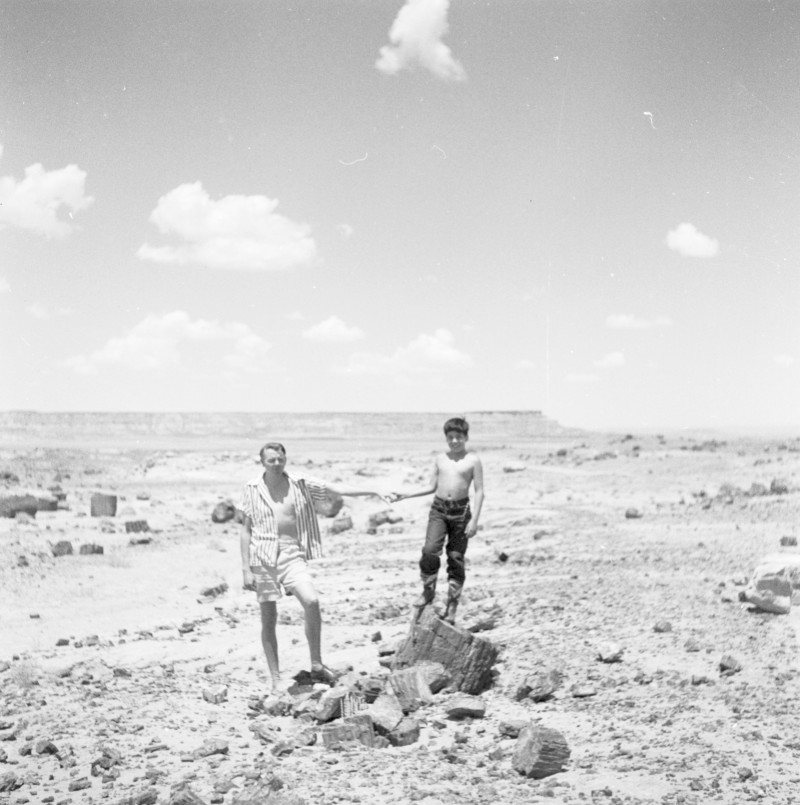

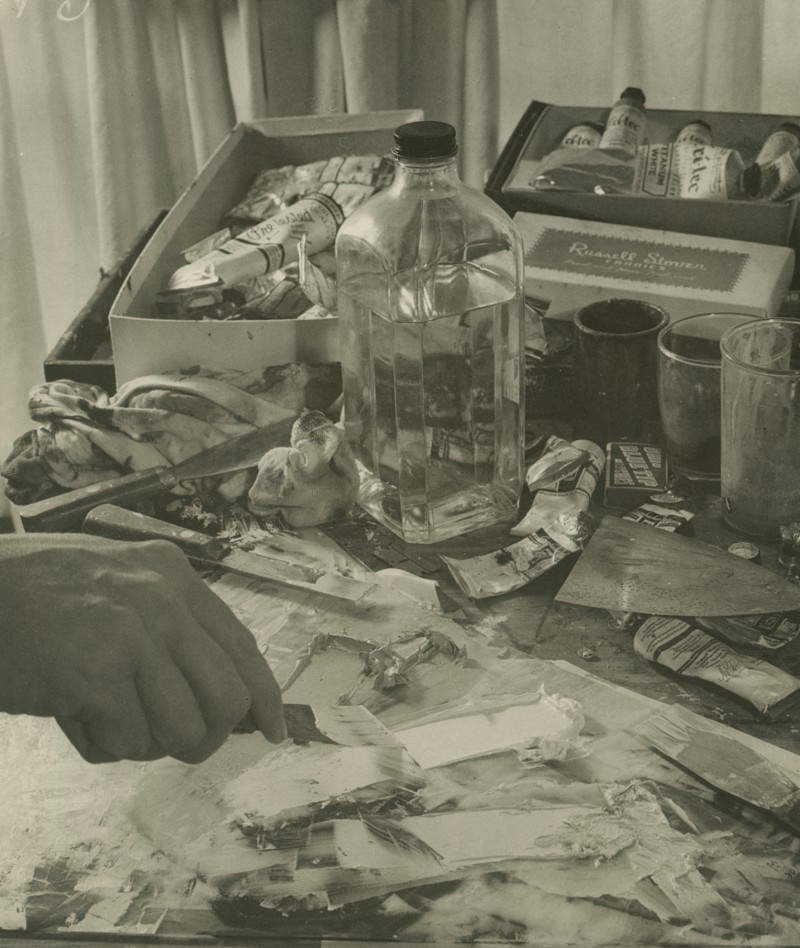
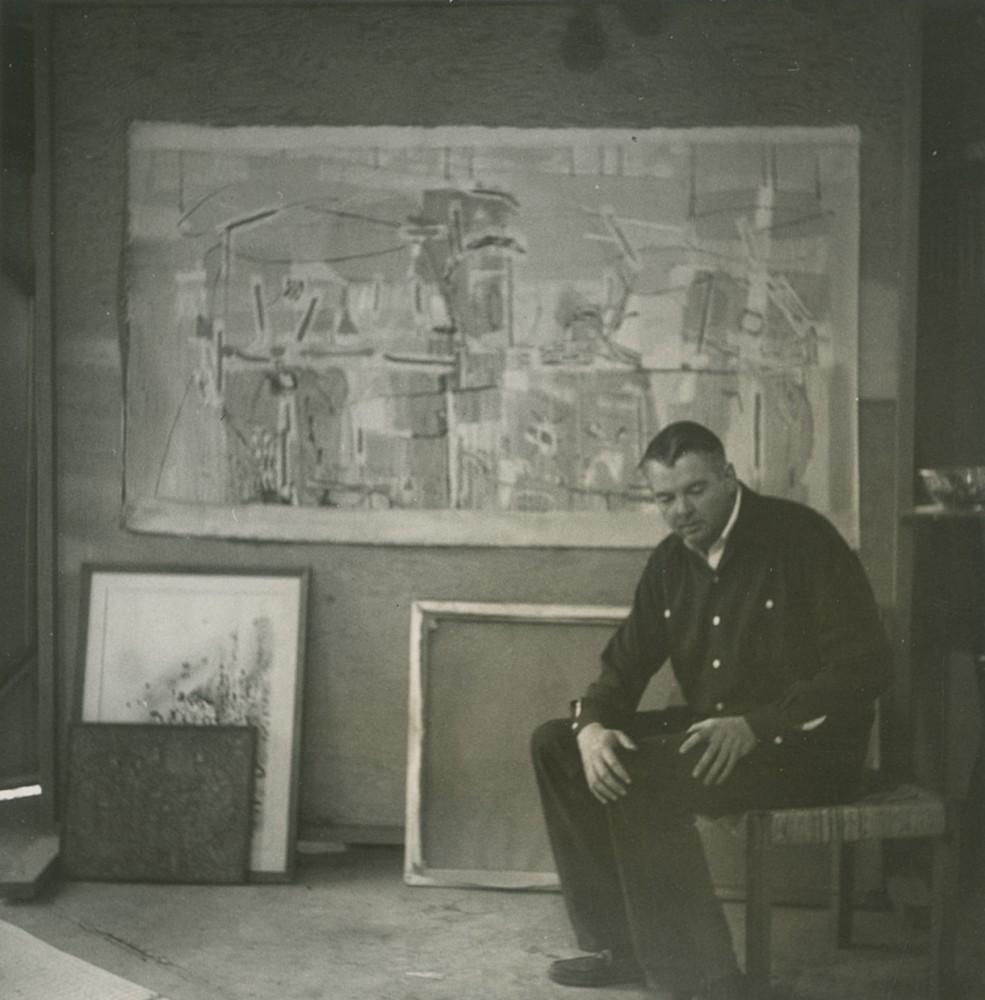
1953
Hurtado and Mullican participate in Ray and Charles Eames’ film, “Bread – The Movie” (1953). Mullican has a solo exhibition at Gump’s Gallery, San Francisco.

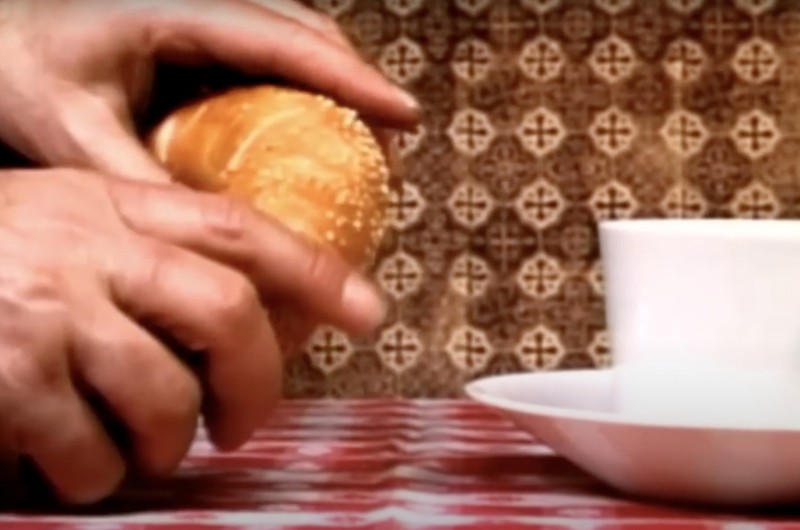
1954
Mullican became an adjunct professor at UCLA, over the years working with , , , , , , Anna Bing Arnold, , and .
Mullican has a solo exhibition with Paul Kantor Gallery, Los Angeles.
1955
While Hurtado and Matthew go to Venezuela to visit her family, Mullican is persuaded by Kenneth McGowan to audit his play writing class at UCLA during which he would write several one-act plays. Mullican then joined Rachel Rosenthal’s acting class in which she focused on improvisational theater. Rosenthal then founded her small group in Hollywood, Instant Theater, which Mullican was a part of.
Mullican has a solo exhibition with Alexander Rabow Gallery, San Francisco.
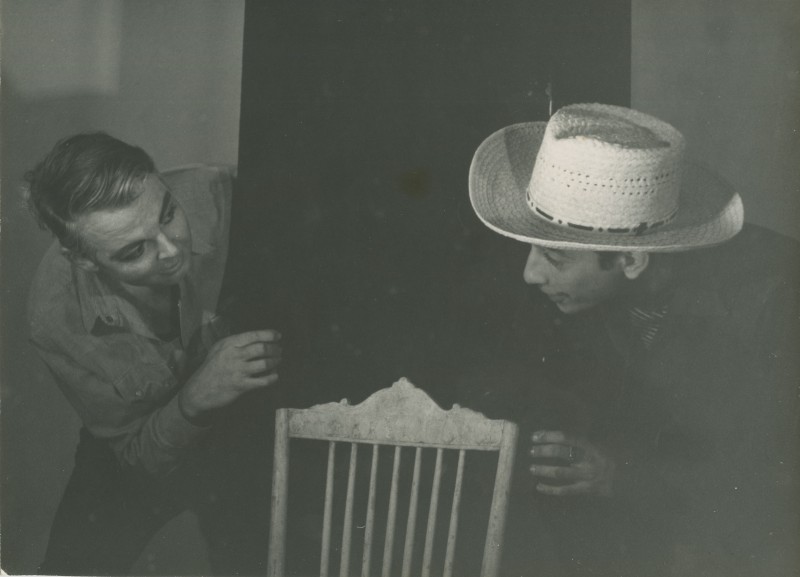

1956
Understanding he was a painter at heart, Mullican then resigned from Instant Theater while continuing to write plays on the side. Hurtado collaborates with Rosenthal on a film performance of Hurtado slowly taking pins out of her hair.
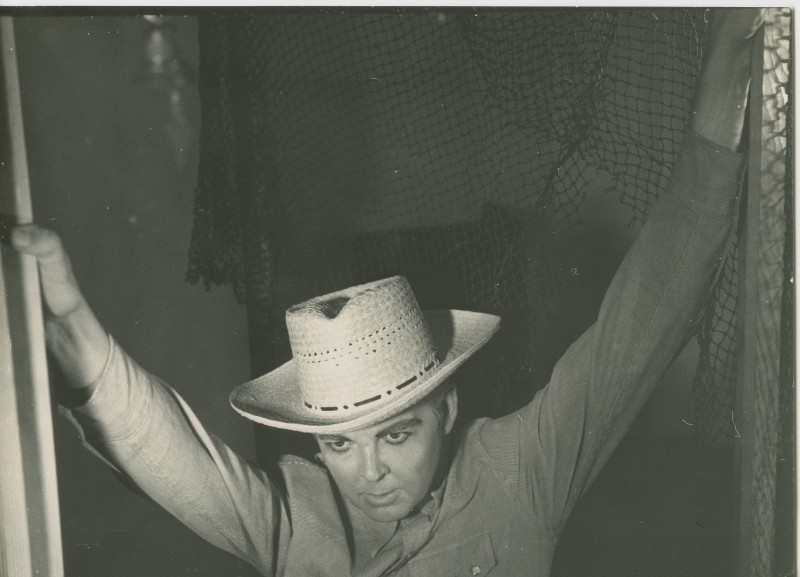
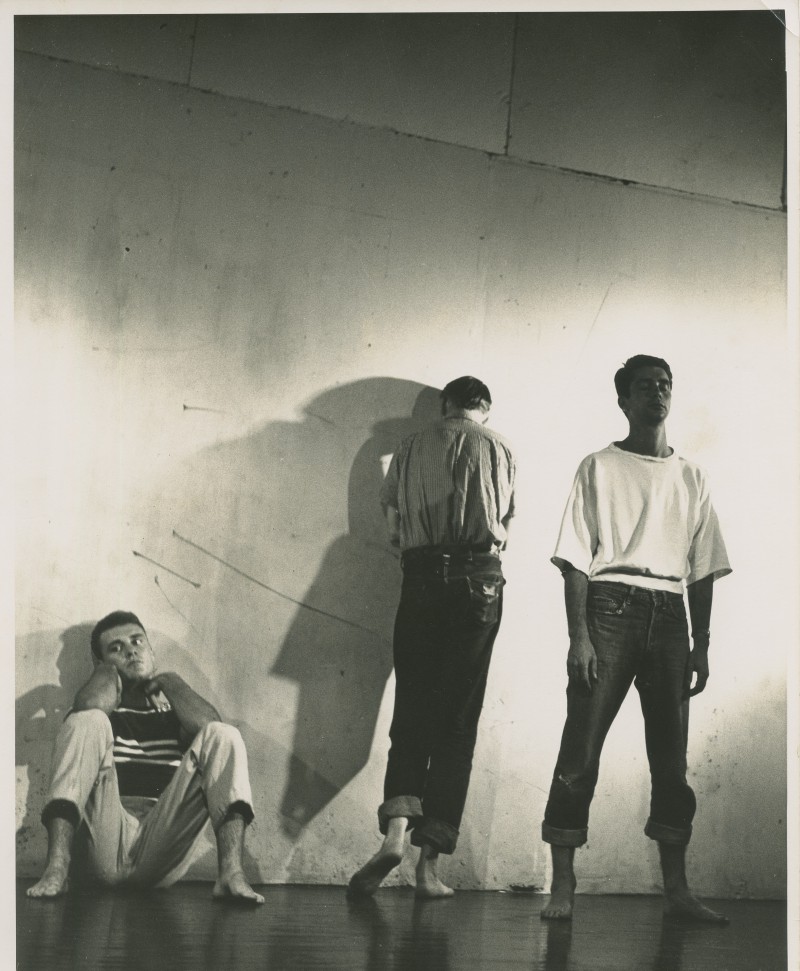
1957
On February 27th, Hurtado and Mullican marry.
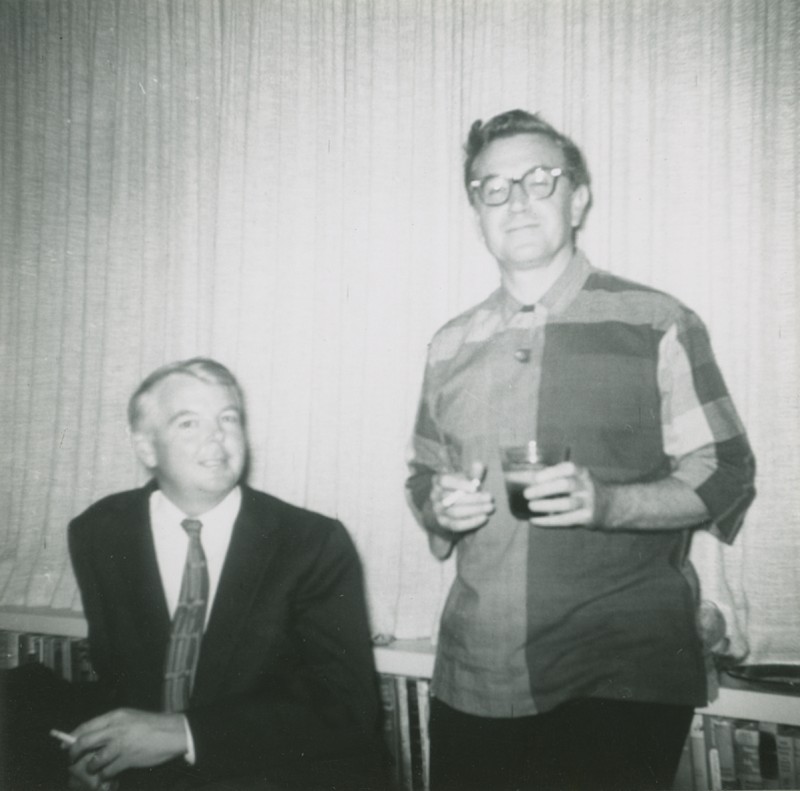
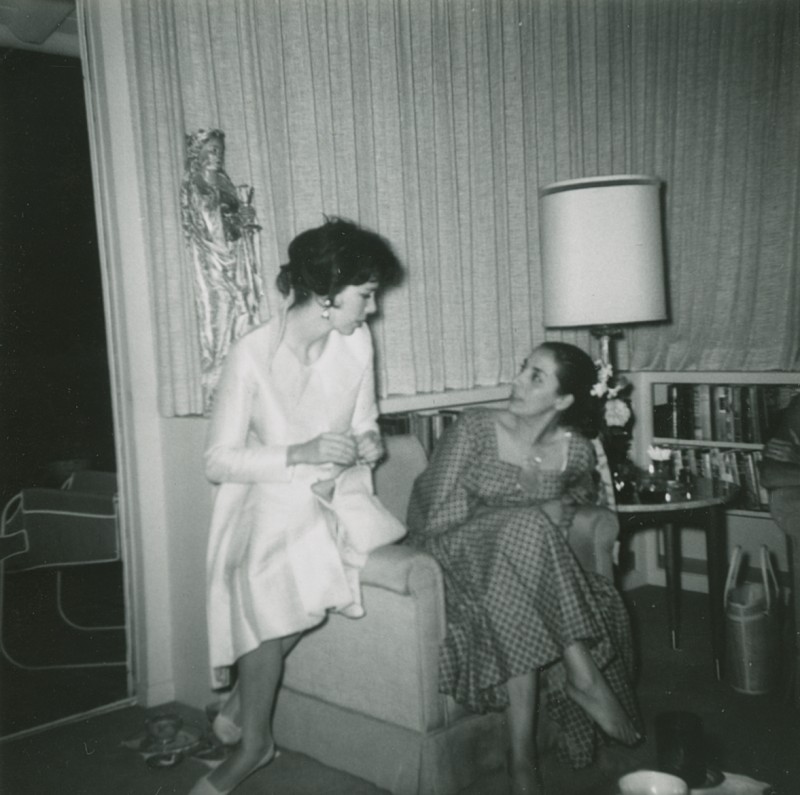
1958
Mullican has a solo exhibition at the Santa Barbara Museum of Art.
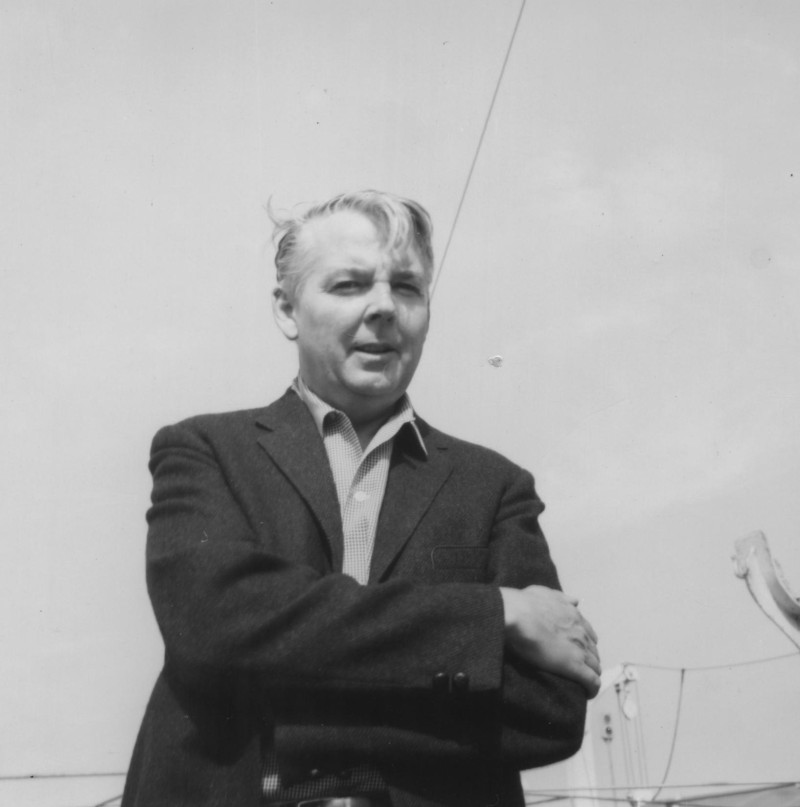

1959
Mullican has a solo exhibition at the Santa Monica Art Gallery.
He receives a Fulbright Guggenheim Grant decides to go to Rome for a year, bringing his family with him. Mullican, Hurtado, and Matthew drive across the country to New York, where Mullican has an exhibition.
Hurtado, Mullican, and Matthew take a boat from New York to Africa. They buy insects in Casablanca, Morocco and continue their travels, eventually arriving in Rome in autumn and live in their apartment from October to June. Mullican secures a studio near the Campo de’ Fiori. During their stay, La Dolce Vita (1960) is being filmed and Mullican and Hurtado meet Italian film director Federico Fellini.
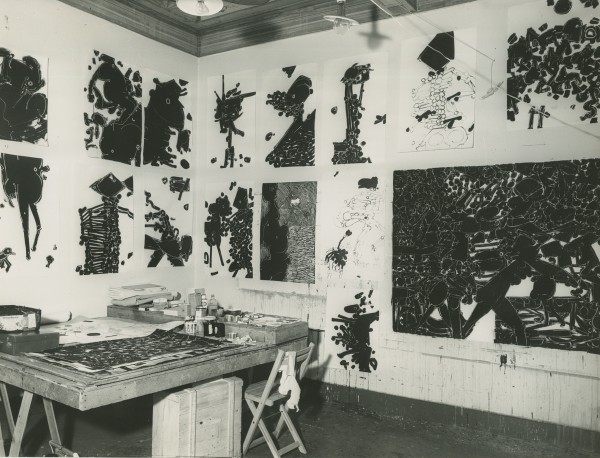
In their Rome apartment, Mullican and Hurtado entertain Louise Nevelson, Peggy Guggenheim, Willem De Kooning, and Isamu Noguchi, who stops in Rome while on his way to Israel.
While in Rome, the family receives an American Express message from Daniel Jr. that Wolfgang Paalen has died.
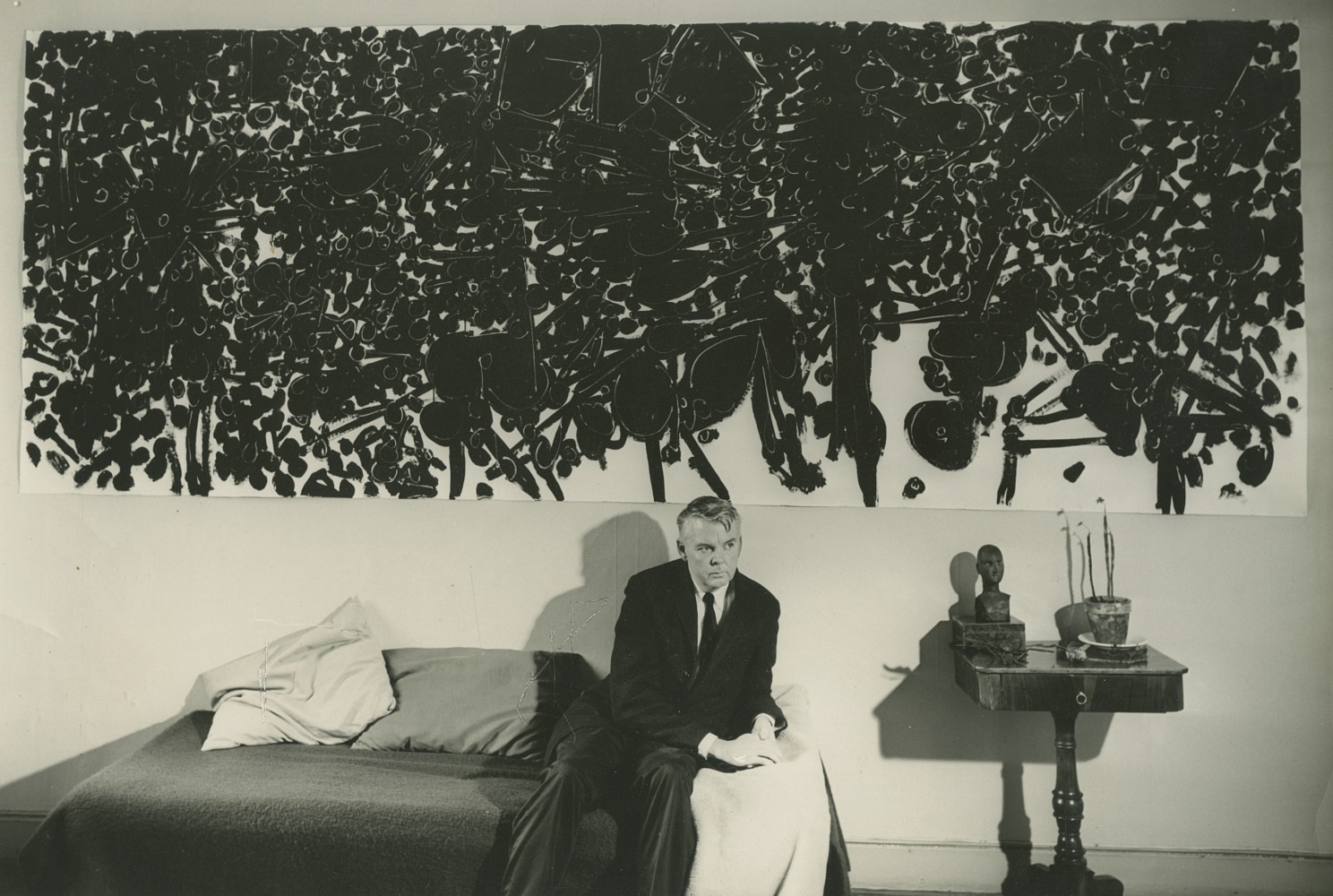

1960
That summer, the family camps around Europe in their blue Opel station wagon, following prehistoric sites from Altamira, to Lascaux, to Carnac, and Brittany. They then travel on to London, Paris, Switzerland, and Italy.
The family returns to the United States with Ailes Gilmore Spinden, a ceramicist with whom Mullican made his first ceramics, in Croton Falls in upstate New York for six months. While visiting New York, Mullican spends time with Herbert Spinden, retired director of the Brooklyn Museum and of the Museum of Natural History, Wilfredo Lam, Sybil Moholy-Nagy, and Marian Willard.
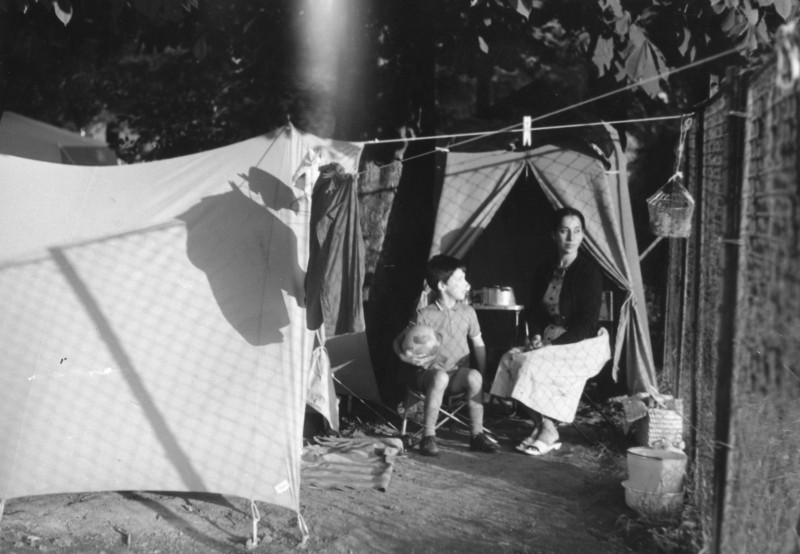
“I left myself wide open still do and that’s why there is such a great range and change in my work from one canvas to the next, and from year to year, and exhibition to exhibition. At times it even worries me that it’s seemingly all so different, and I can only hope that one day it will all kind of all fall into place as really being mine.”
1961
Mullican, Hurtado, Matthew, and their new cat Speckles, drive from New York to San Francisco. After teaching a summer course at the University Southern California, Mullican is hired as faculty at the University of California Los Angeles.
Mullican has a retrospective at the Pasadena Art Museum, as well as solo exhibition at the UCLA Art Gallery, Willard Gallery, New York, and Paul Kantor Gallery in Los Angeles.
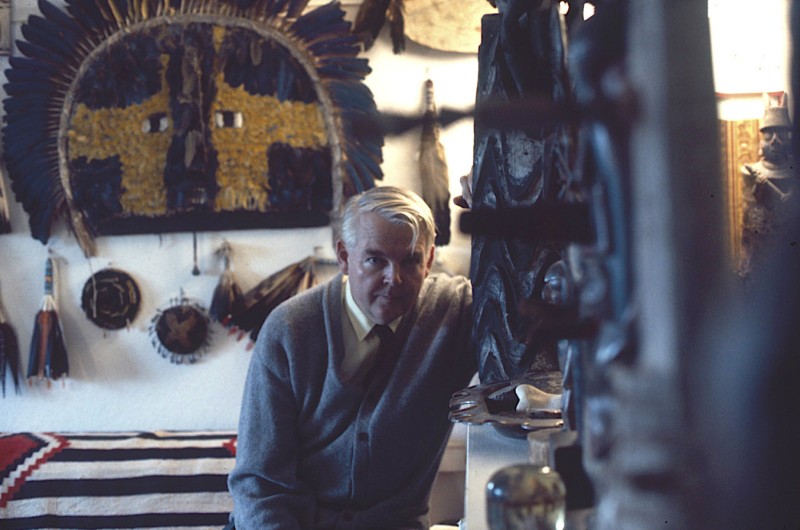
1962
Mullican’s second son, John Lee Mullican is born.
1963
Mullican has a solo exhibition with Rose Rabow Gallery, San Francisco.
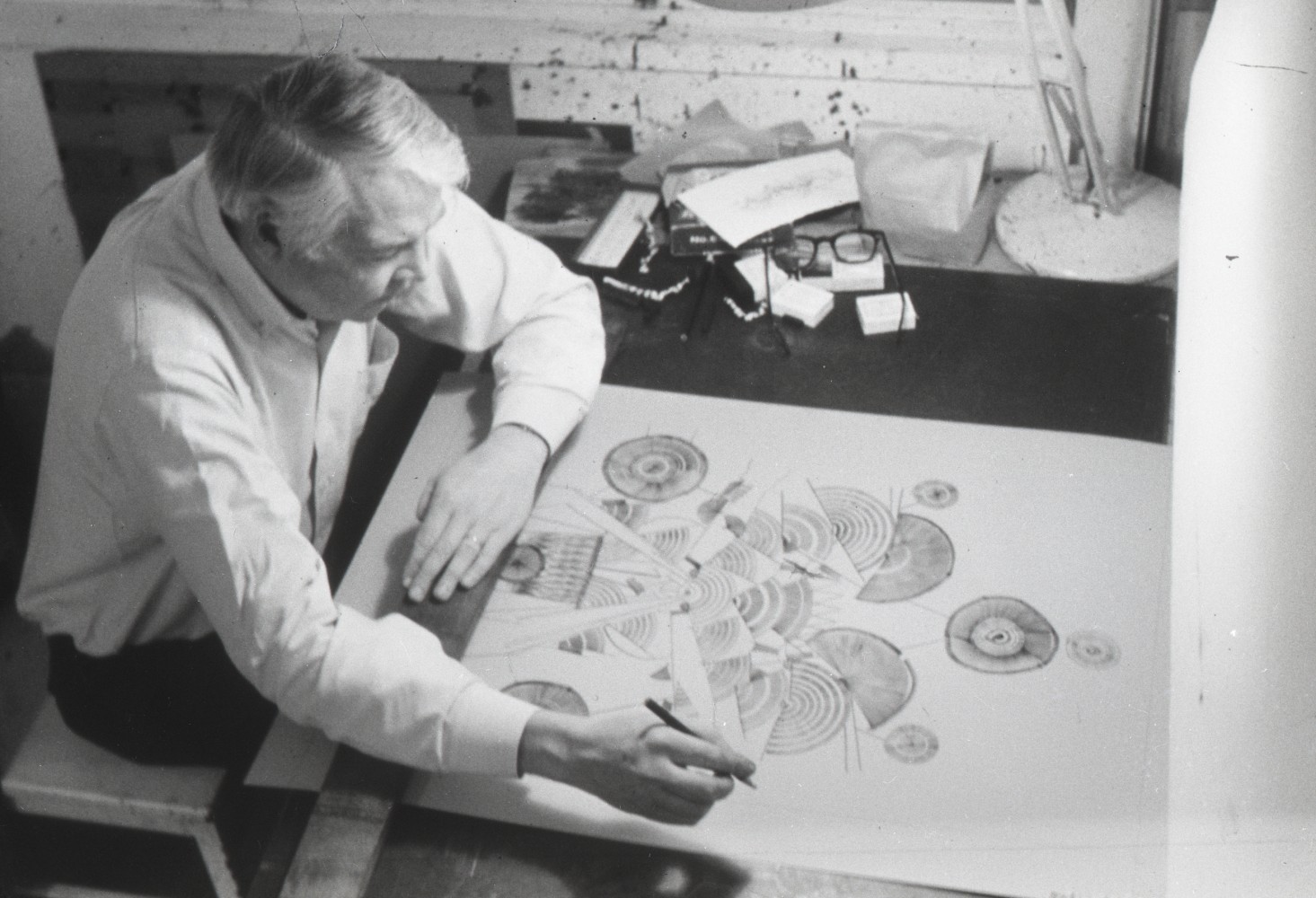
1964
Mullican is awarded a Fellowship with the Tamarind Lithograph Workshop and has a solo exhibition at Mount St. Mary’s College in Los Angeles.

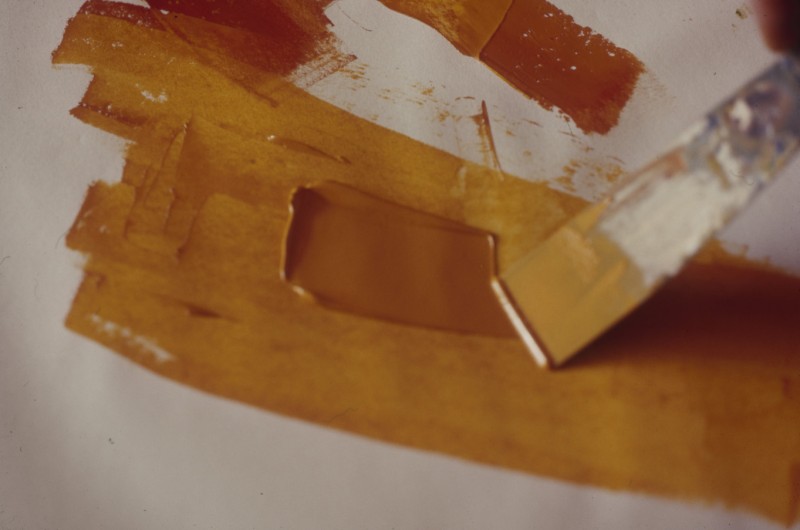
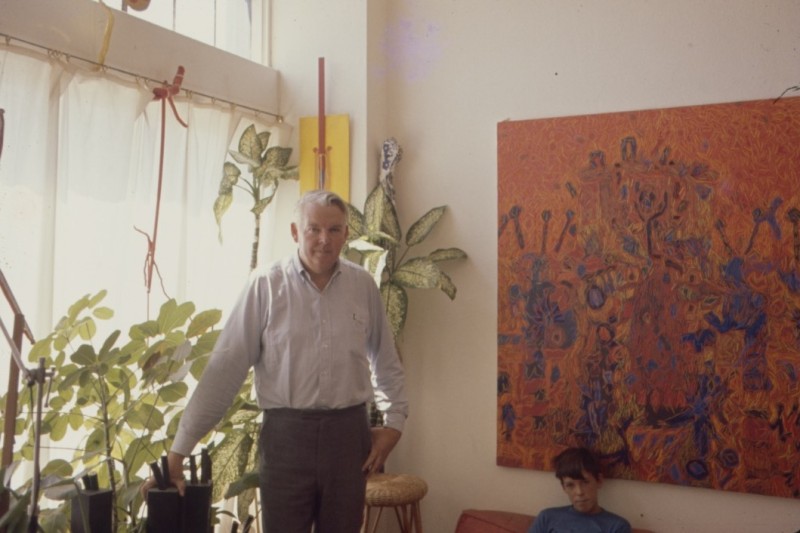
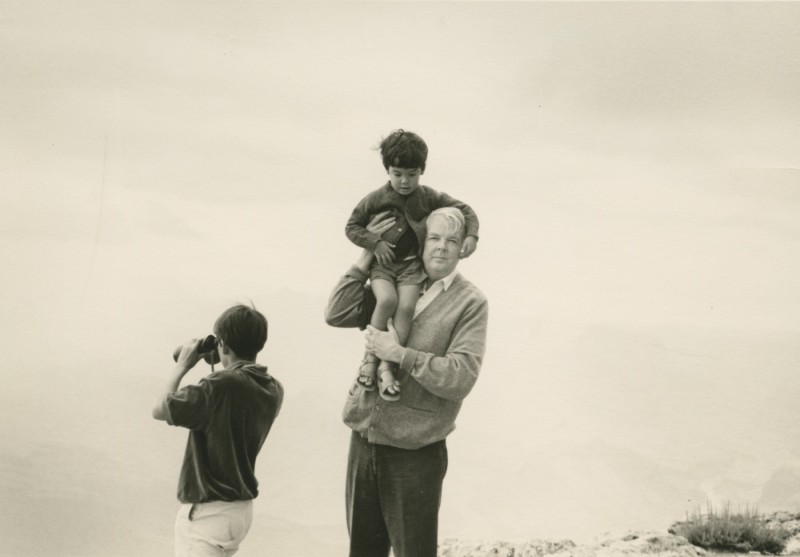
1965
Mullican has a solo exhibition at the San Francisco Museum of Art and Silvan Simone Gallery, Los Angeles.
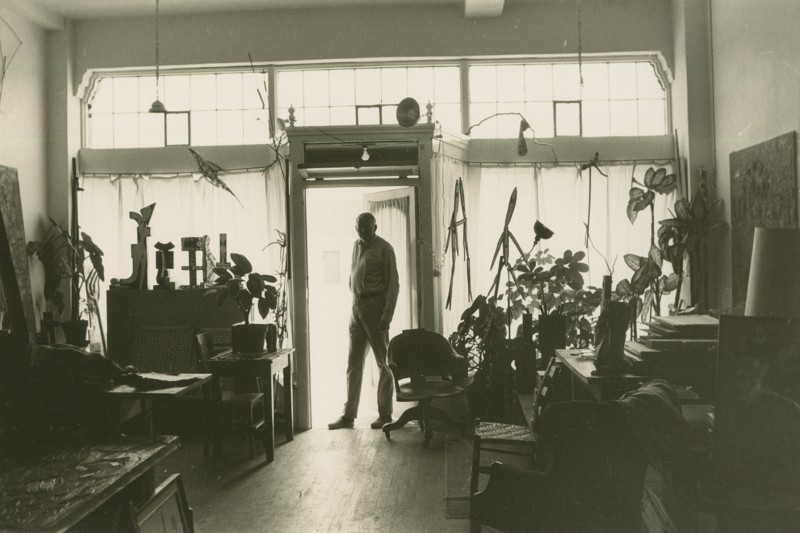
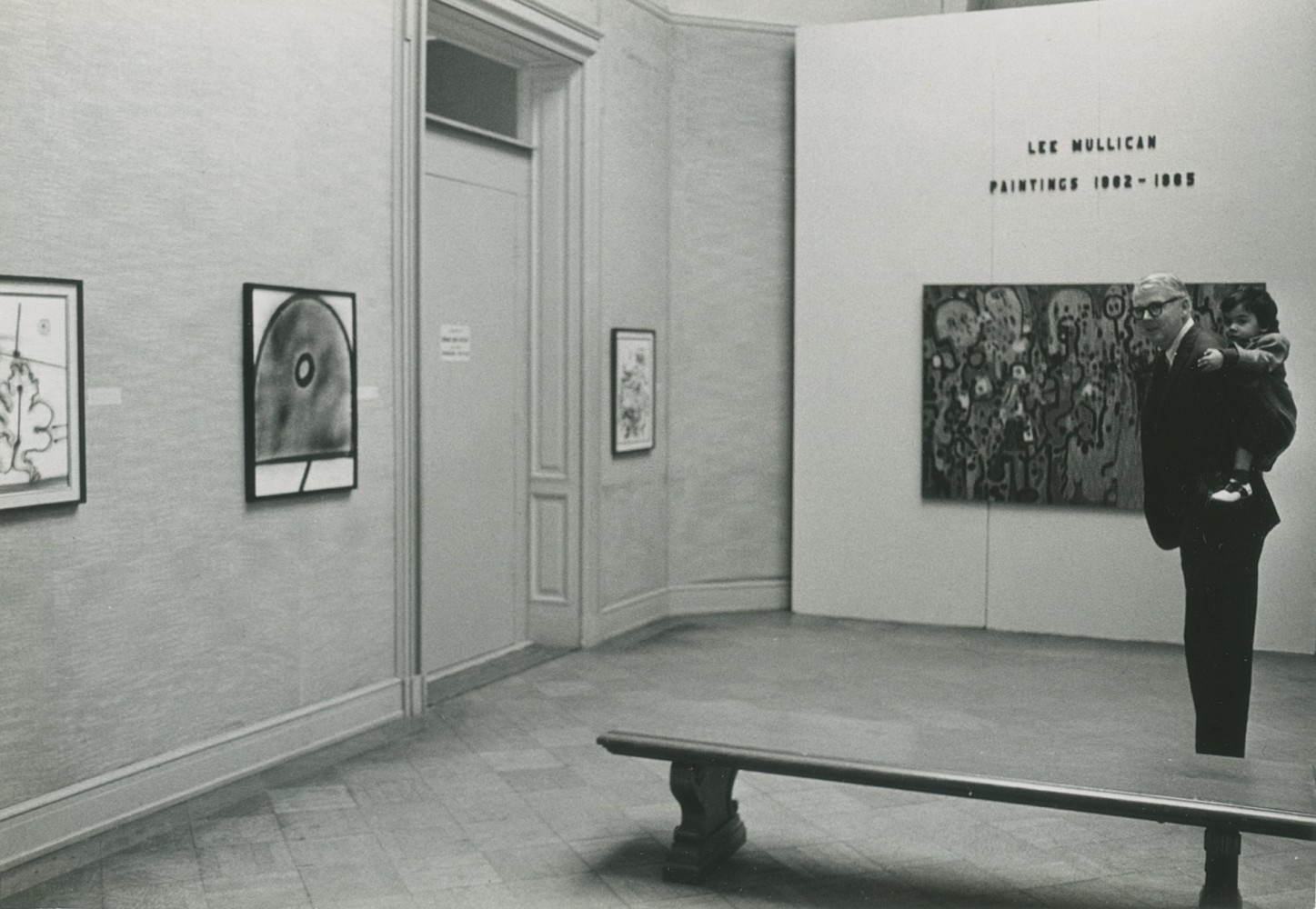
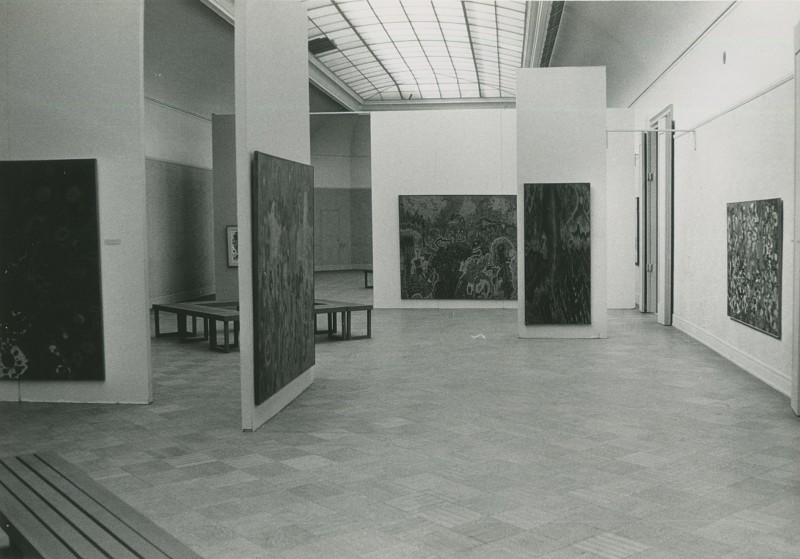
1966
Mullican has a solo exhibition with Esther Bear Gallery, Santa Barbara.
1967
Mullican has solo exhibitions at Willard Gallery, New York, Silvan Simone Gallery, Los Angeles, and the Oklahoma Art Center, Oklahoma City.
1968
Mullican applies to UCLA’s exchange program with the University of Chile, Santiago. He is awarded the position and he moves to Chile with his family. They stop in Venezuela to visit Hurtado’s relatives.
In Chile the family looks for a place to live. With no luck, they settle for an apartment while continuing to look for a house for the family of four. After months of searching the family secures a home and a studio for Mullican. John and Matt are enrolled in an American school. Mullican has a solo exhibition at the Museo Nacional de Bellas Artes, Santiago, Chile.
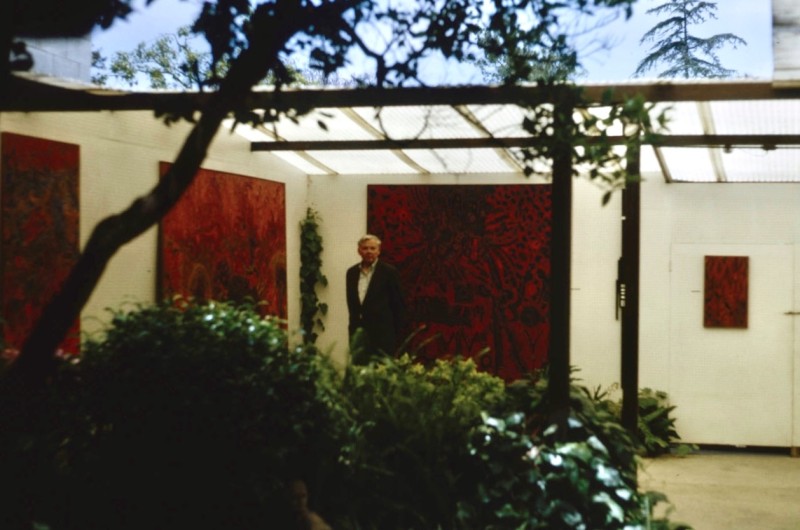
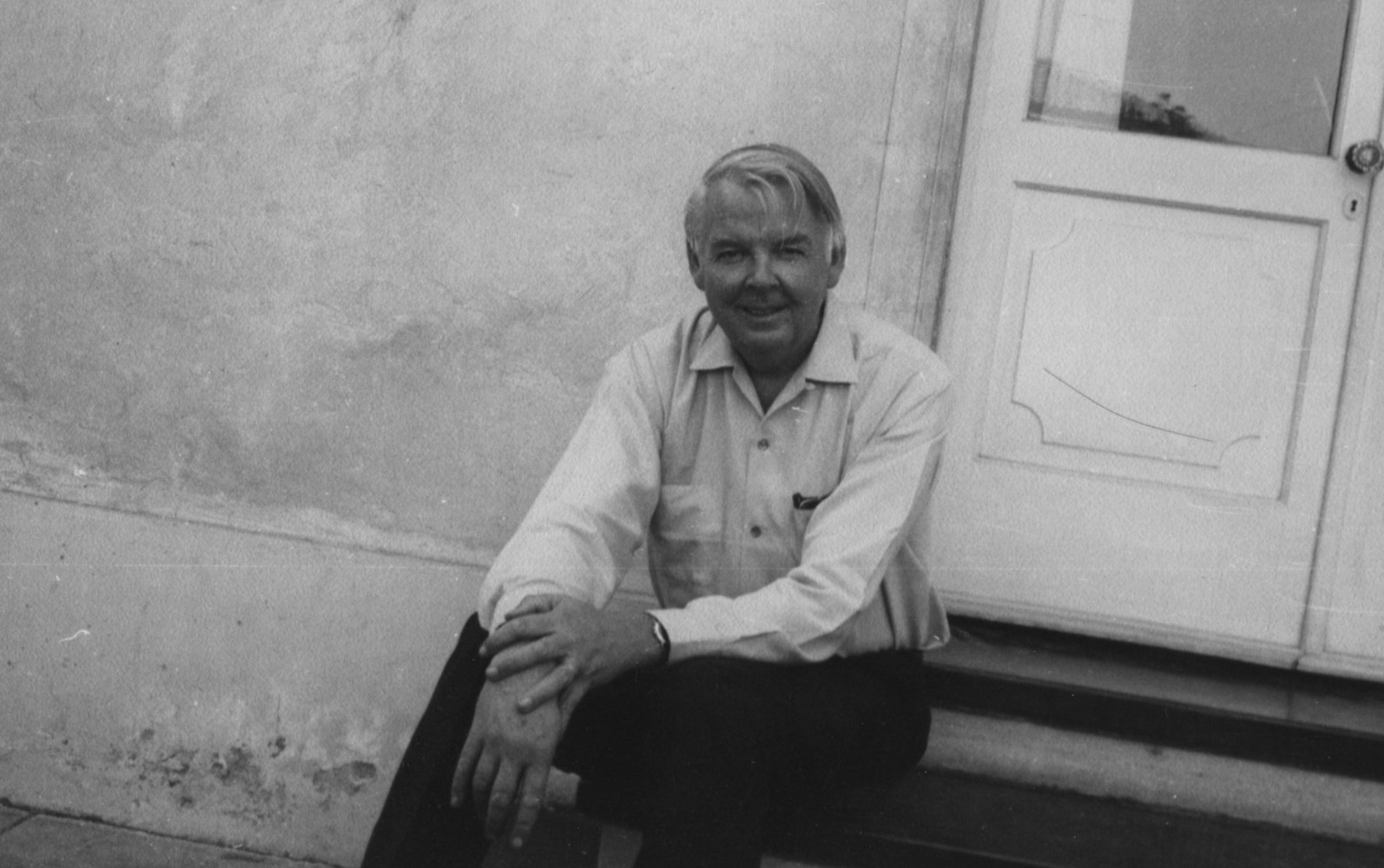
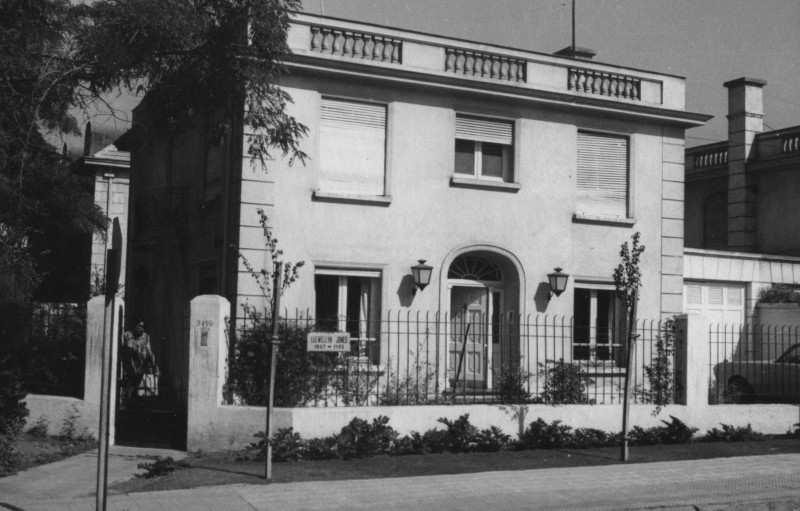
1969
On the way back to Los Angeles, the family travels to Peru, Machu Pichu, and Ecuador before returning to Santa Monica. Upon returning Mullican’s solo exhibition Lee Mullican Paintings 1965-1969 opens at the UCLA Art Galleries, Los Angeles.
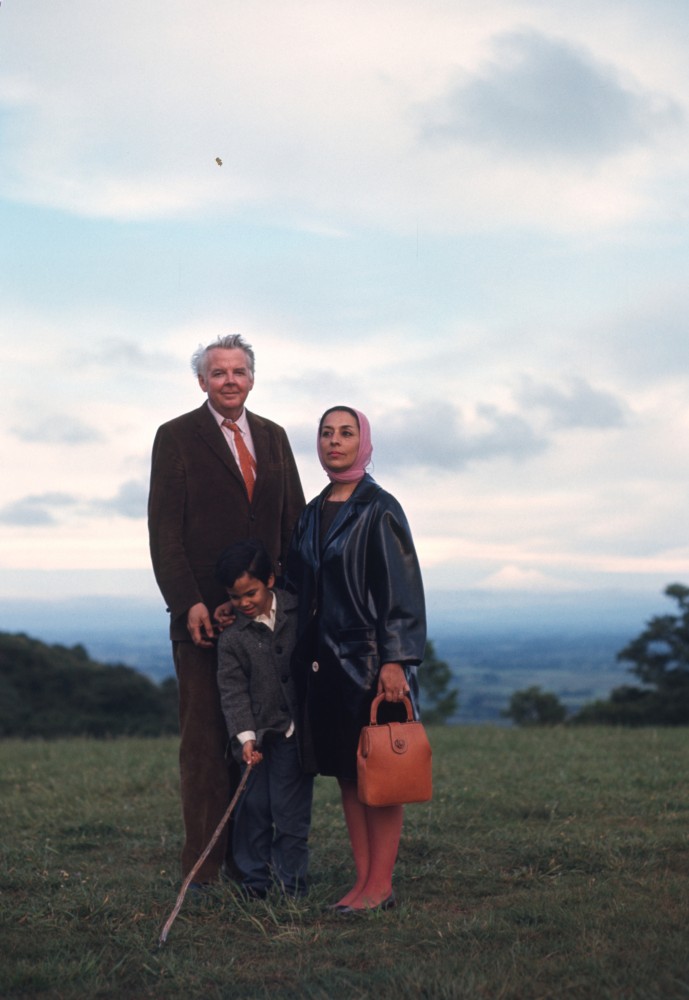
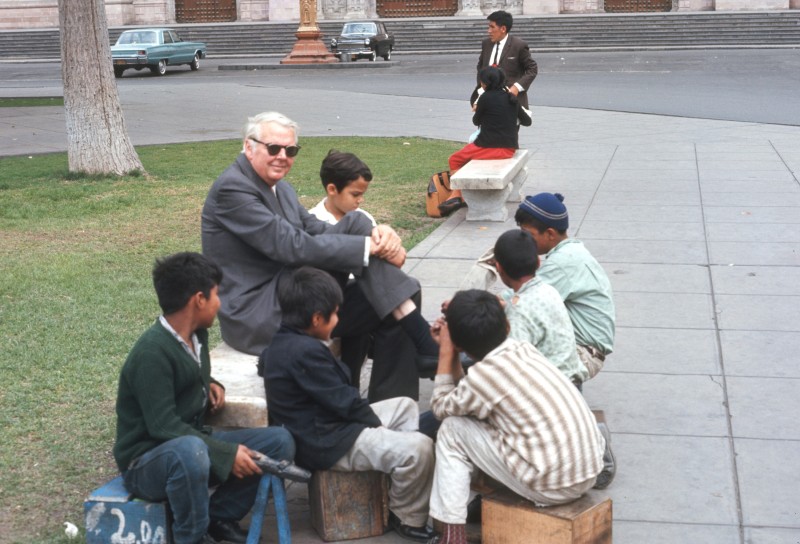
1970
In the 1960s and 1970s Mullican and Hurtado spend summers in New Mexico, visiting Lee’s parents in Chickasha, Oklahoma. Mullican and Hurtado fall in love with the natural surroundings of Taos and return often until deciding to buy land in 1970. That same year Mullican has a solo exhibition with Rose Rabow Gallery, San Francisco.
1971
Mullican has solo exhibitions with Jodi Scully Gallery, Los Angeles, and Esther Bear Gallery, Santa Barbara.
1972
Mullican has a solo exhibition at Patrick Shannon, Santa Fe.
1973
Mullican and Hurtado’s home in Taos, New Mexico is complete. Visitors to the house include Ann Matta, and her son Gordon Matta Clark, Isamu Noguchi, and artist Sam Francis. During this time Ailes Gilmour moves to Santa Fe as well. Mullican has a solo exhibition at the Santa Barbara Museum of Art.

1974
In February Hurtado has her first solo exhibition at the Woman’s Building in Los Angeles in the Grandview One. Mullican has a solo exhibition with Rose Rabow Gallery, San Francisco.
1976
From February to March Hurtado visits New York for Matt Mullican’s first New York exhibition. She stays with her friend, Mia Agee and spends time with Isamu Noguchi and Ailes Gilmore.
Mullican’s solo exhibition Lee Mullican: Paintings and Drawings, opens at the Santa Barbara Museum of Art, as well as a solo exhibition at the San Francisco Museum of Modern Art.
1977
Mullican has a solo exhibition at Stables Gallery of the Taos Art Association in New Mexico.

1979
In November Hurtado and Mullican travel to India where Mullican is curating an exhibition for UCLA.
1980
Mullican and Hurtado leave Santa Monica to spend the summer in New Mexico where Mullican is included in a group exhibition. In August, they travel to Chickasha, Oklahoma. On the way back to Santa Monica Hurtado visits the Grand Canyon. Lee Mullican: Retrospective, opens at the Los Angeles Municipal Gallery, Barnsdall Park, Los Angeles.
In August Mullican, Hurtado, and John travel to New York for Mullican’s exhibition Lee Mullican, Selected Works, 1948-1980 at Galerie Schreiner. They stay with Ailes Gilmour.


1985
Mullican has a solo exhibition with Herbert Palmer Gallery, Los Angeles.
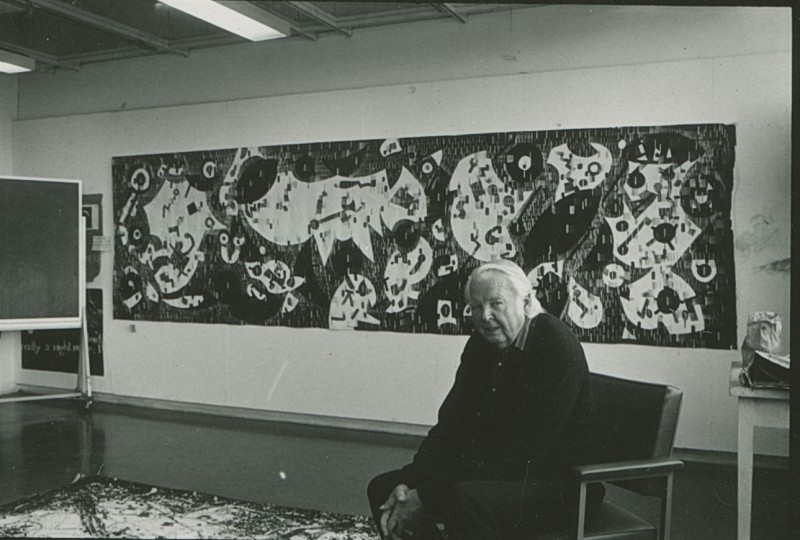
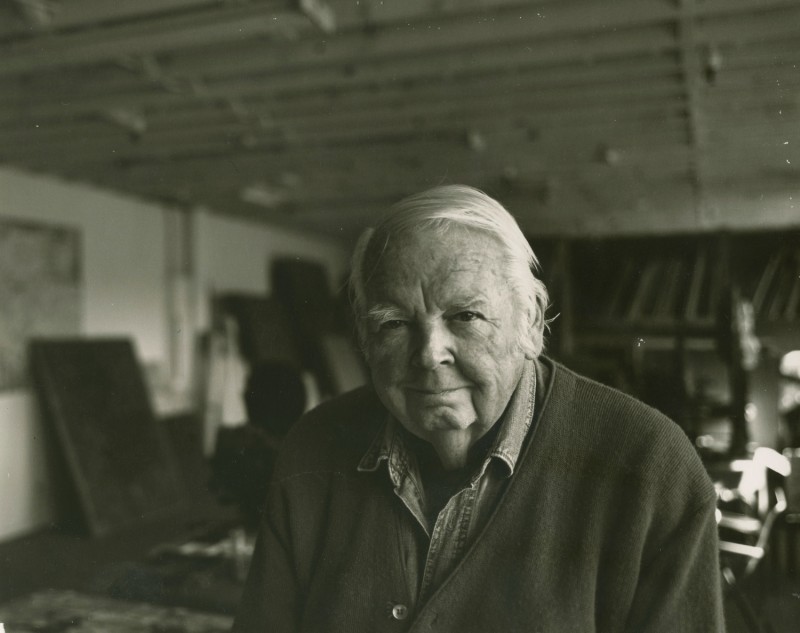
1986
Mullican has a solo exhibition at LACE, Los Angeles Contemporary Exhibition, Los Angeles, as well as with the Heritage Museum in Santa Monica.
In 1986, Mullican began the University of California Los Angeles’ Advanced Design Research Center’s Program for Technology in the Arts to create experimental digital compositions made possible by the new computer visualization capabilities. Replacing his brush and signature palette knife striations with a clickable mouse and pen-like stylus, Mullican merged the late Surrealist method of automatism with the computer’s instant and precise replication of marks.
Mullican started working with an IBM 5170, equipped with the Truevision Advanced Raster Graphics Adapter (TARGA), and a Summagraphics Summasketch stylus to experiment with painting and drawing on a computer. He found inspiration in the similarities between his painting style and a computerized matrix, particularly the dark background paintings he began to produce in the late 1970’s
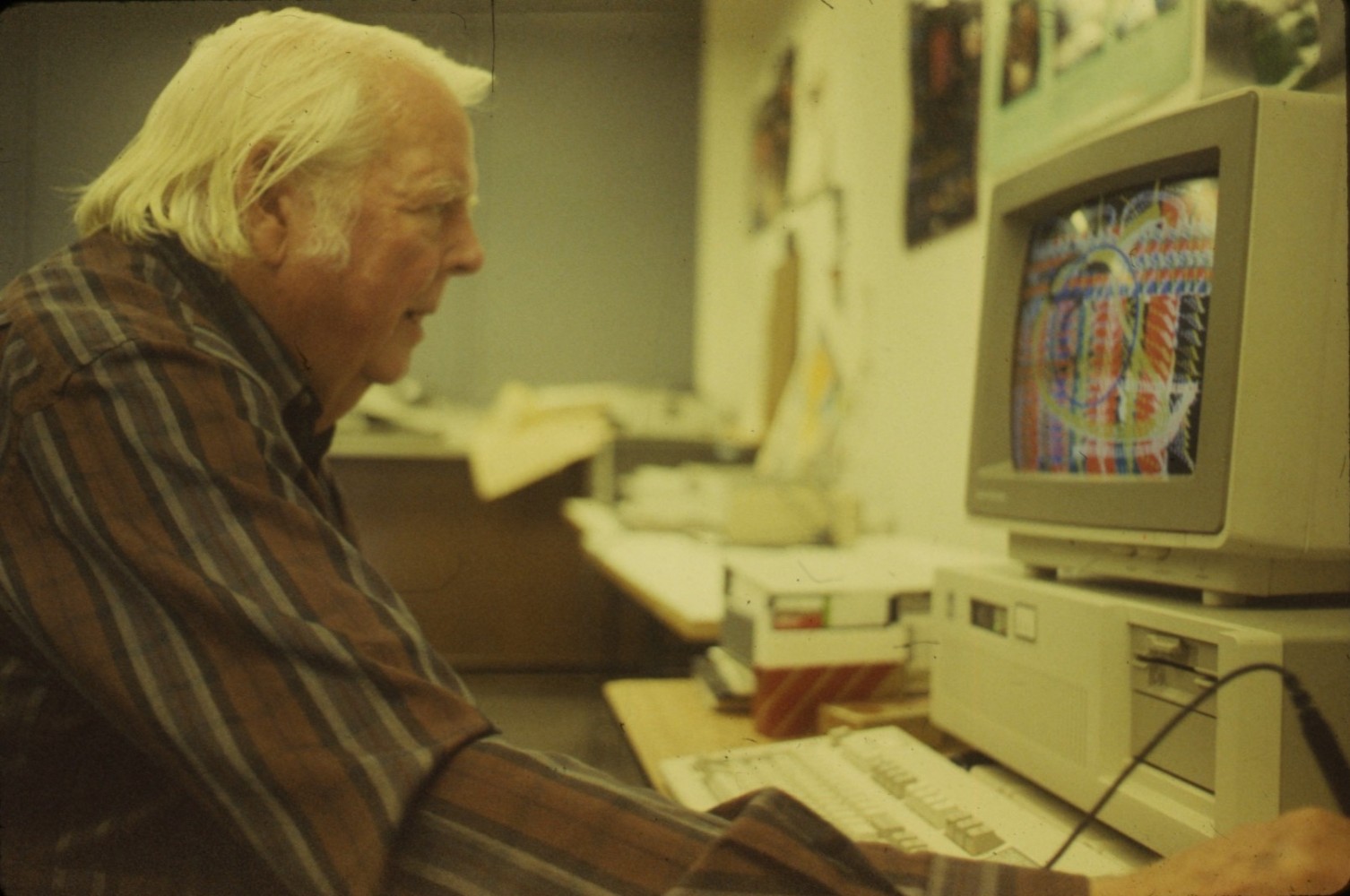
“I examined why I thought the computer was for me. Even in my paintings, I was always working with pattern and line and color. I’ve had a built-in computer ever since I’ve been doing art.”
1987
Mullican’s solo exhibition New Painting and Sculpture opens at Charles Campbell Gallery, Los Angeles.
He continues to create experimental digital compositions made possible by the new visualization capabilities of computer graphics, finding inspiration in the similarities between his painting style and a computerized matrix. The possibilities of new technology paired with Mullican’s advanced painting practice, resulted in buzzing and dense digital compositions of complex color palettes and illusions of depth.
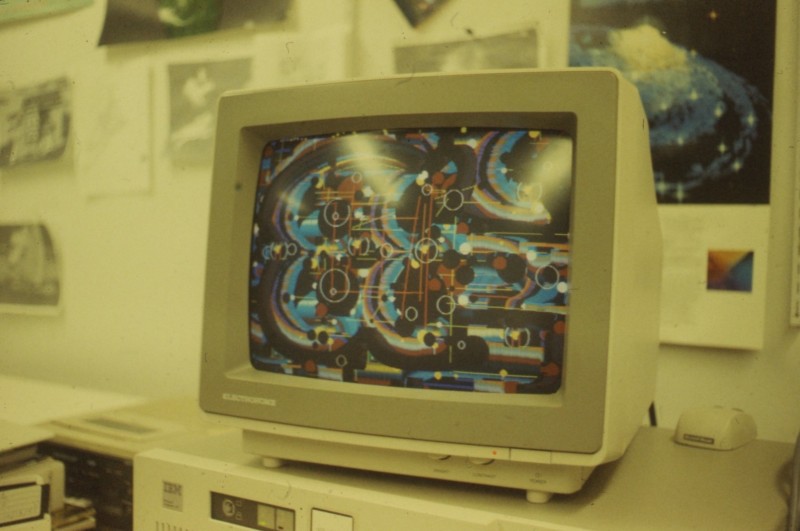
“I found that beyond what one thought, the computer as being hard-lined, analytical, and predictable, it was indeed a medium fueled with the automatic, enabled by chance, and accident, discovery of new ways of making imagery.”
1988
In the 1980s Mullican and Hurtado travel extensively for Mullican’s exhibitions and visiting family and friends in New York, San Francisco, Oklahoma, Texas, Hawaii, England, France and India. Mullican and Hurtado spend most summers in Taos and autumns in New York. Mullican is included in Computer Art, IBM Gallery, Syracuse University, New York, NY
In February, Hurtado and Mullican travel to New York and go to India in March.
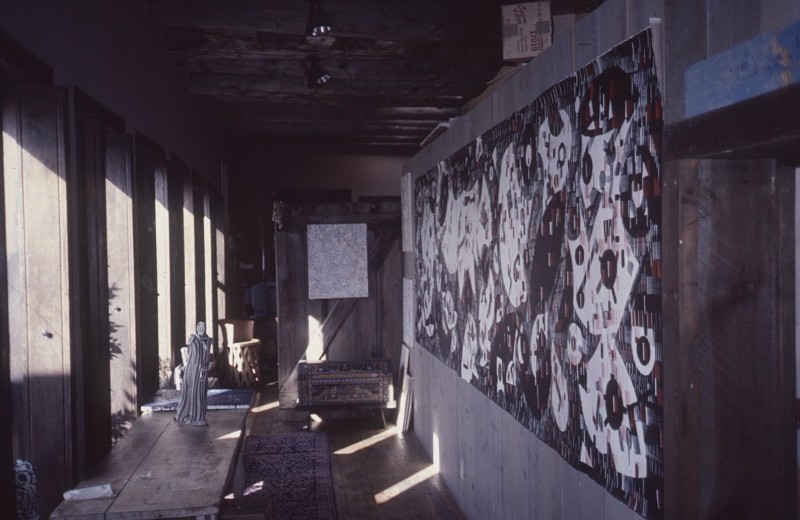
1989
Mullican has a solo exhibition at the Heritage Museum, Santa Monica, and Herbert Palmer Gallery, Los Angeles.
Lee Mullican and his son Matt Mullican hold a two person exhibition at Johnson Gallery, University Art Museum in Albuquerque, New Mexico.
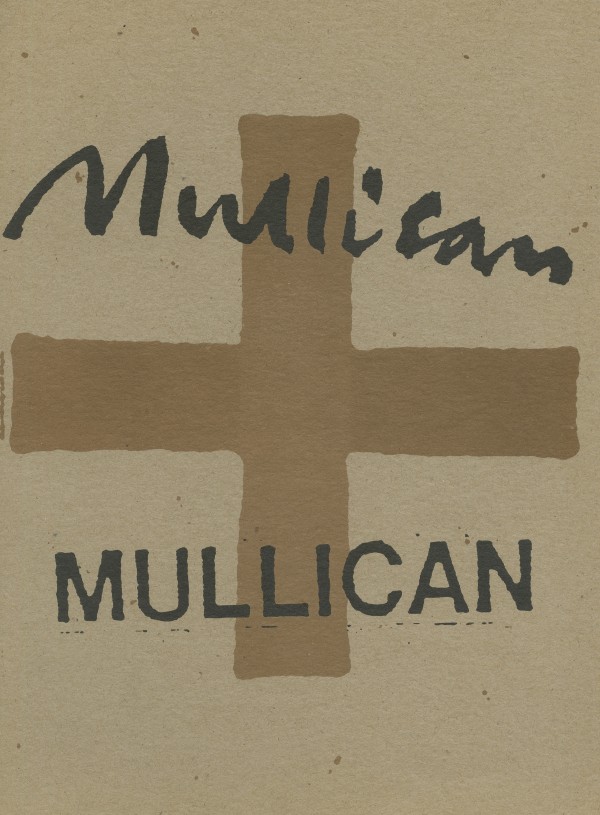
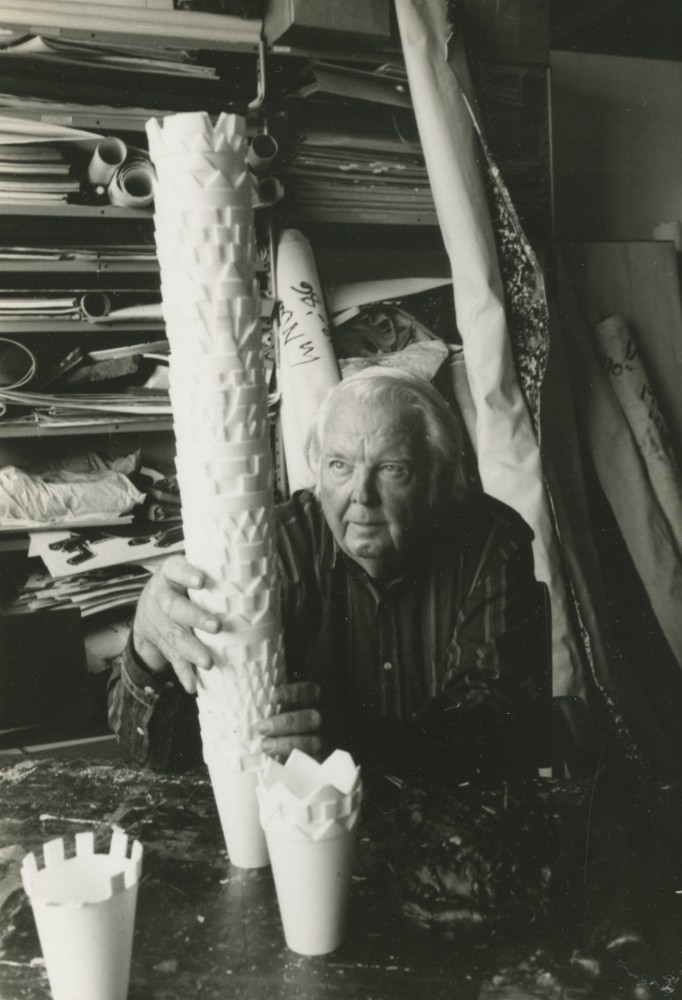
1990
In the 1990s, Mullican and Hurtado continue to travel, visiting New York, Taos, Brussels, Paris, London, Zurich, Berlin, Spain, and Vienna. They continue to visit their home in Taos every summer, entertaining artists such as Vija Celmins, Agnes Martin, Larry Bell, Gus Foster and Ken Price.
1993
Mullican’s solo exhibition Pueblo Drawings opens with Thibaud Campbell Gallery, San Francisco.
1995
Mullican’s work is exhibited at the Pavilion at the Botanic Garden, Munich, Germany and his solo exhibition, Realizing the Possible: The Art of Lee Mullican, opens at the University of New Mexico, Hardwood Foundation in Taos.
1998
On July 8th, Lee Mullican passes away.

“I have a feeling that everything I do will find its place.
I’m an optimist as far as that goes.”
1999
Lee Mullican: Selected Drawings 1945-1980, opens at the Hammer Museum, UCLA, Los Angeles.
2001
A retrospective of Mullican’s drawings opens at the Hammer Museum, UCLA, Los Angeles.
2004
The estate of Lee Mullican presents its first solo exhibition with Marc Selwyn Fine Art, Los Angeles.
2007
Mullican’s retrospective Lee Mullican: An Abundant Harvest of Sun is held at the Los Angeles County Museum of Art curated by Carol Eliel.
2016
The estate of Lee Mullican opens a solo exhibition with Susan Inglett Gallery, New York.
The estate of Lee Mullican holds its first solo exhibition with James Cohan, New York.
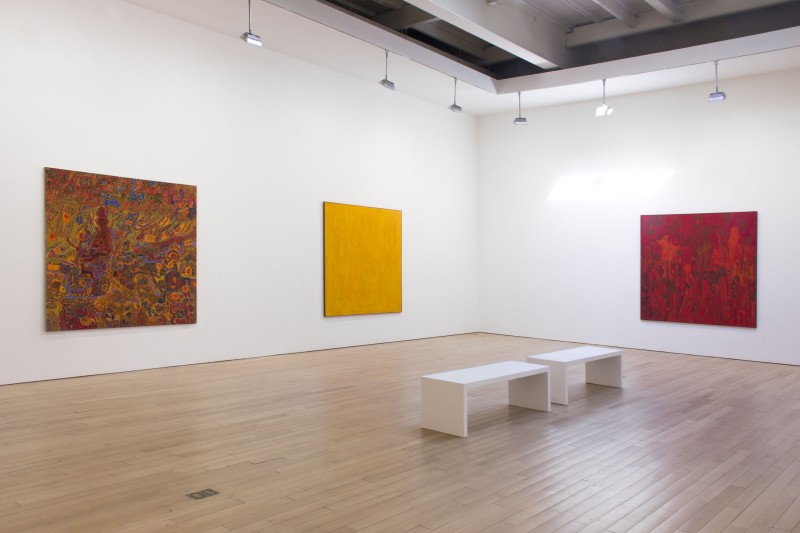
2017
Solo exhibition The 1960s opens with James Cohan, New York.
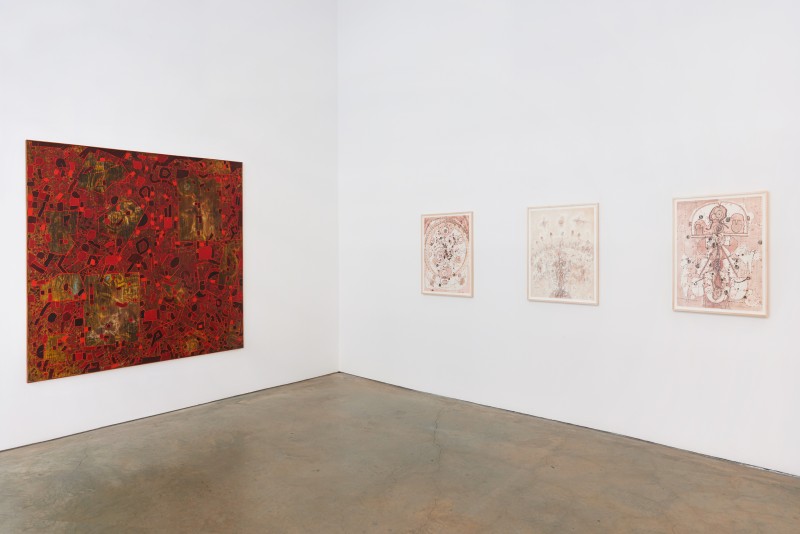
2019
Solo exhibition, Cosmic Theater curated by Michael Auping opens at James Cohan.
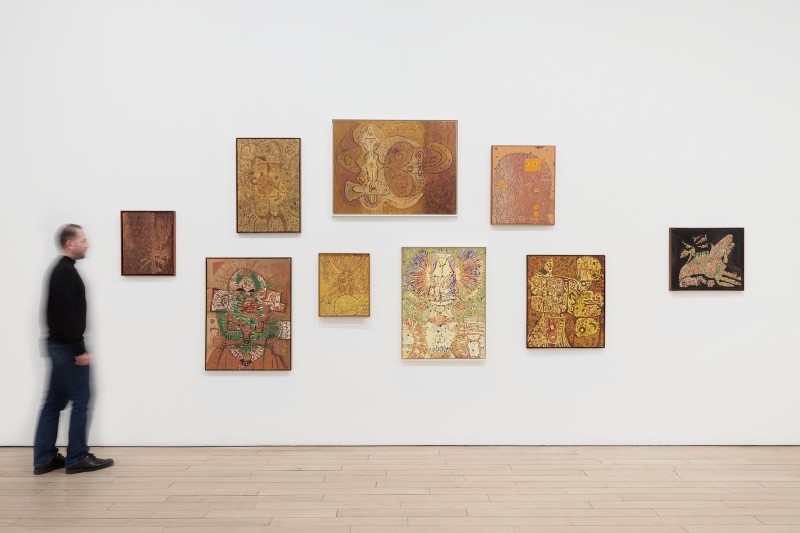
2021
Mullican’s solo exhibition of digital works and paintings, Computer Joy, opens at Marc Selwyn Fine Art
